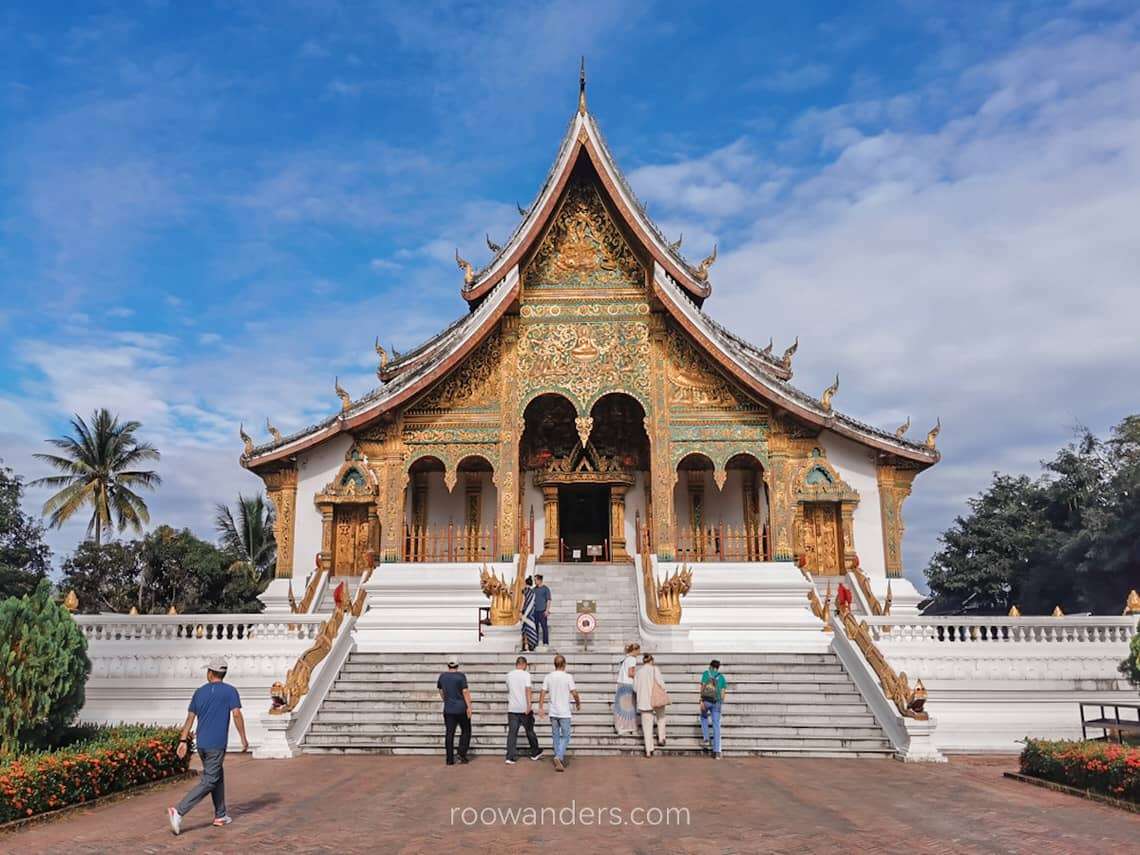
The Luang Prabang Activities Travel Guide
Luang Prabang, the small and vibrant ancient capital of Laos, is a delight to travel to. Home to golden temples, enchanting waterfalls and an overall tranquil and welcoming atmosphere, you could easily spend more than 3 days in this beautiful city.
Situated in the northern part of Laos, Luang Prabang is inscribed under UNESCO for its harmonious fusion of traditional Lao architecture and that of the Europeans.
I could attest to that!
The houses weave naturally around Phousi Hill along the conjunction of the Mekong and Nam Kham Rivers. It was pleasant strolling down and between the roads and streets of Luang Prabang. Sometimes, a random turn blossoms into a delightful gilded temple or a chic cafe selling artisanal croissants and aromatic coffee.
Planning to head over to Luang Prabang, or Laos in general, soon? Well, here is my guide to all you have to know for your planning!
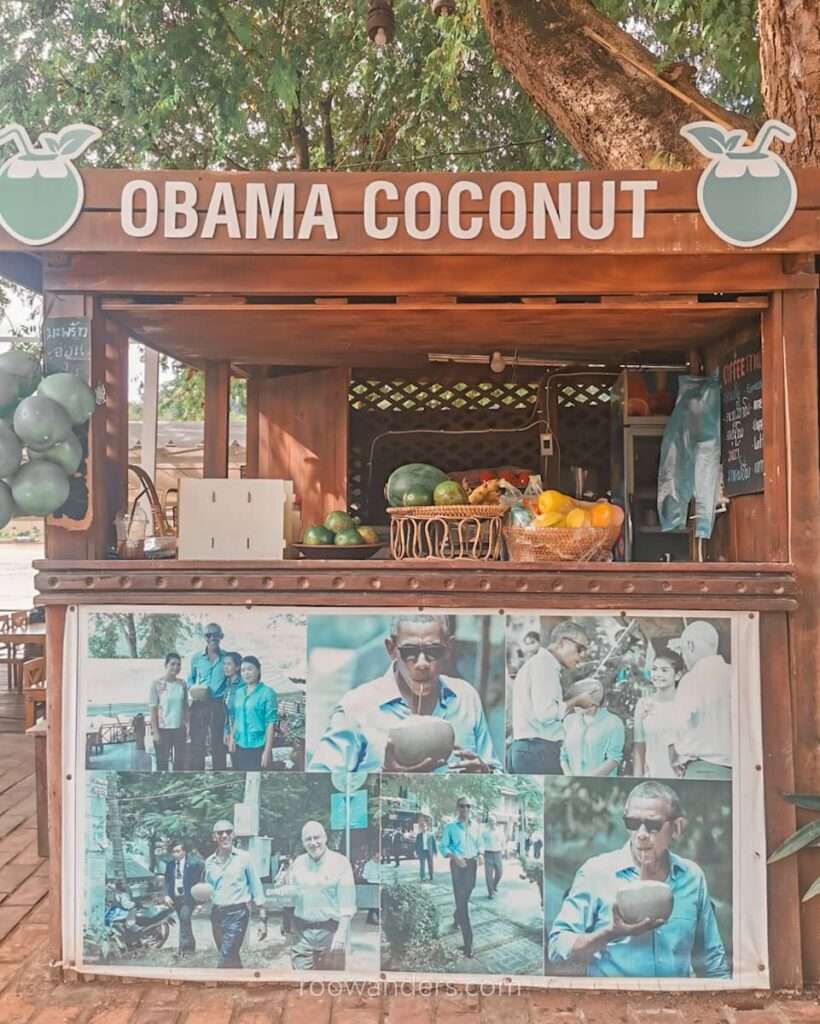
I visited Luang Prabang, Laos in Nov 2023 and spent a delightful 3 days there. This post contains affiliate links that cost nothing to you but support my blog! It may also be updated periodically. Cheers!
Best time to visit Luang Prabang
The dry and cool months of November to January are generally the best period to travel in Laos. Daytime temperatures are agreeable, though early mornings and late nights can be a little chilly. For my week-long trip in Laos, I encountered only one freak downpour in Luang Prabang during lunchtime.
Expect heavy rainfall from June to October. Travelling during the peak rainy season can be dangerous or even impossible with road closures and floods. Even if you were to get to your destination, certain attractions may be closed. But with heavy rains come massive waterfalls.
The period between March and May coincided with the country’s slash-and-burn season. You’d have acrid smog everywhere that paints the sky a dusty orange, and fill your clothes and hair with particles and a lingering burnt smell. A friend of mine visited in April 2023 and had to wear a mask throughout her trip. Not fun.
Travelling into Luang Prabang
Laos is a landlocked country surrounded by Kunming, China, and Myanmar at the north, Vietnam at the east, Thailand at the west, and Cambodia at the south. The Mekong River, the longest river in Southeast Asia, weaves through all six countries, resulting in a variety of transport options.
Flight
Like Vientiane, the capital city of Laos, Luang Prabang has an international airport with direct flights from the neighbouring countries – Vietnam, Thailand, and Cambodia.
While we did not take our international flight into or out of Luang Prabang, we took a domestic one on Laos Skyway back to Vientiane for a grand total of 450k kip – a steal, really.
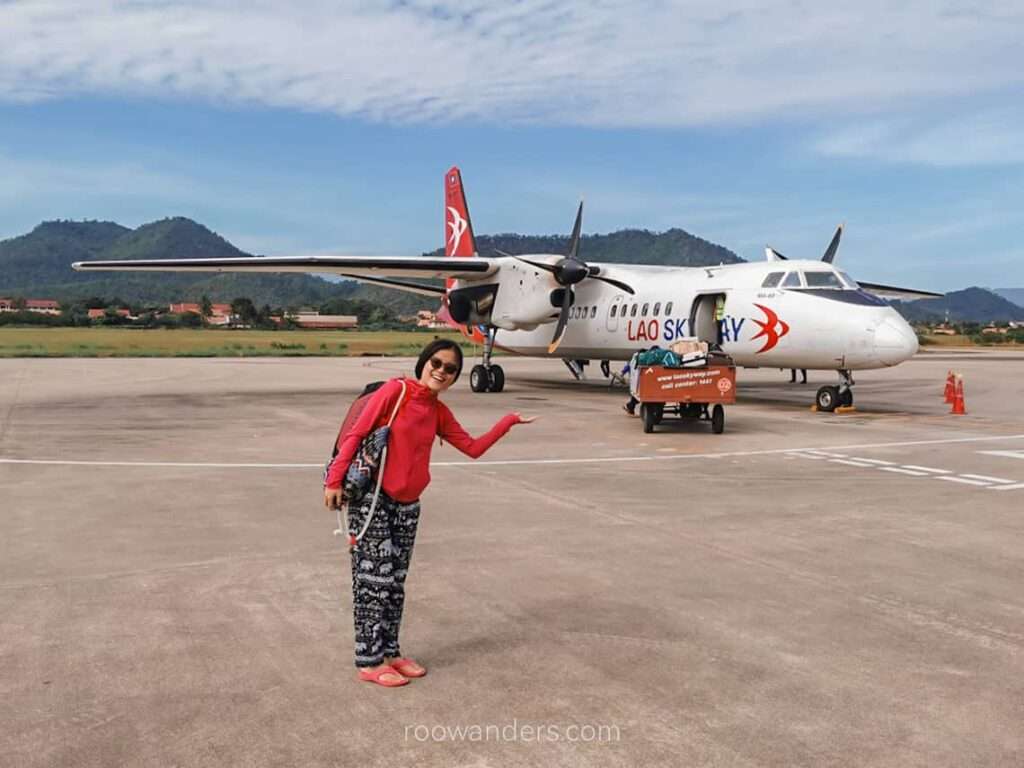
Train
The new Laos China Railway shortens the journey from Kunming, China, to Vientiane via rails from days to 8 hours. Getting a ticket, however, can be rather taxing if you’re doing it yourself. Most travellers buy from 12Go. I’ve met tourists from China who flew into Vientiane and then took the trains back to Kunming, with stops at Vang Vieng and Luang Prabang.
Sleeper trains from Bangkok connect to Vientiane via the Friendship Bridge over the Mekong River. Then take the LCR from Vientiane to Luang Prabang. I’ve never taken a sleeper train in Thailand, but it may be similar to the sleeper I took in Vietnam on the Reunification Express Line.
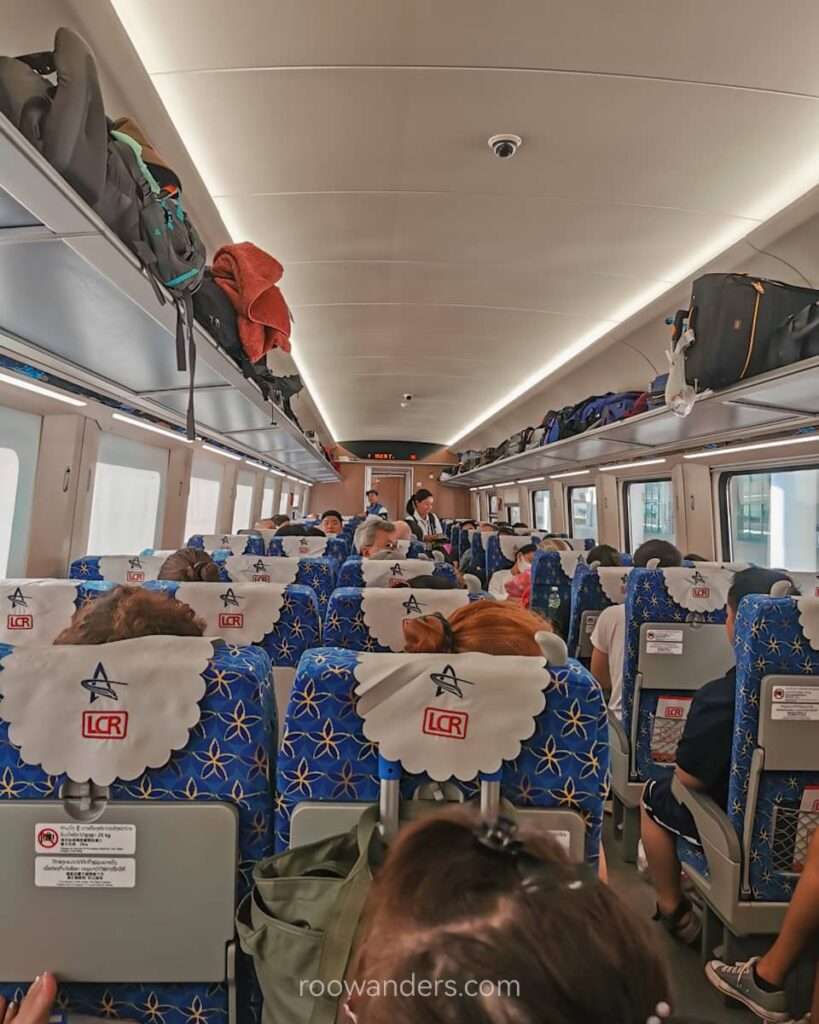
Bus
There are three bus stations in Luang Prabang.
The Southern Bus Station is actually made up of two stations. One covers international routes, and the other to the South of Laos, such as Vang Vieng, Vientiane and the Plain of Jars.
The Northern Bus Station covers Northern Laos, such as Huay Xai, Phongsali, and Udomxai, and journeys into China. It is close to the airport, north of Luang Prabang.
Most accommodations, at least in my hostel, can arrange bus tickets. You could also purchase them online from 12Go.
Boat
Another popular mode of transport is the 2D1N slow boat from Thailand to Laos. There are tour operators who could arrange for a hassle-free way of travelling via the slow boat from Chiang Mai, Chiang Rai, or Pai to stops between Huay Xai and Luang Prabang in Laos.
Motorbikes
Make sure the motorbike is truly yours if you’re riding it across the immigration. Do not ride a rented bike, unless you’re travelling with a travel agency that offers tours of such nature.
The police will definitely ask for evidence.
Travelling around Luang Prabang
Walking
You can get to places within Luang Prabang centre with ease by walking. Luang Prabang has such a welcoming vibe. The ancient capital is also surrounded by the Mekong and Nam Khan Rivers, which makes for a nice stroll in the late afternoons.
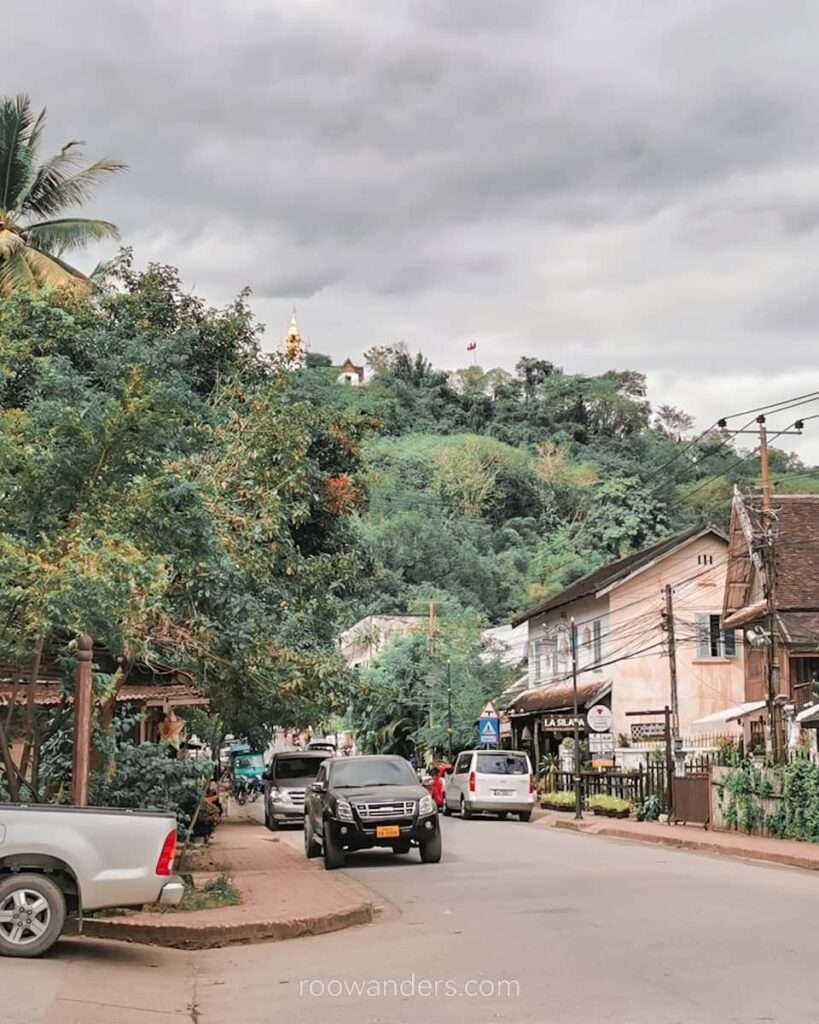
Most attractions are beyond a reasonable walking distance. But when you’re thinking of heading to the outskirts for attractions such as Kuang Si Waterfall or Pak Ou Caves, a motorbike, tuk tuk or organised tours are your go-tos.
Cycling
While I did not cycle there, I saw shops renting bicycles and electric bikes. You may rent them from your accommodations as well. Make sure you get mountain bikes for the rough roads. Be warned though, it can be very tiring with the bends, curves and portholes.
Ride Hailing/ Taxi
Loca, a Thai-owned company, is like the Grab of Laos. You could use the app for payments, order takeaways, and call for a ride. However, this service is still predominantly used only in Vientiane and Luang Prabang. I accumulated enough points from two Loca rides to exchange for a free iced Americano in a partnering cafe.
Loca only operates within the Luang Prabang centre.
Motorbike
Same with cycling but less strenuous. Rent your motorbike from the many shops around Luang Prabang or with your accommodation, but make sure you are licensed! Shops would keep your passport in exchange for the motorbike. Motorbike rental starts from 100k kip to 150k kip per day, depending on the make and model.
Word of caution: there are cases of stolen motorbikes after dark. It would be wise to rent by day or arrange with your accommodation to have them locked within the compound.
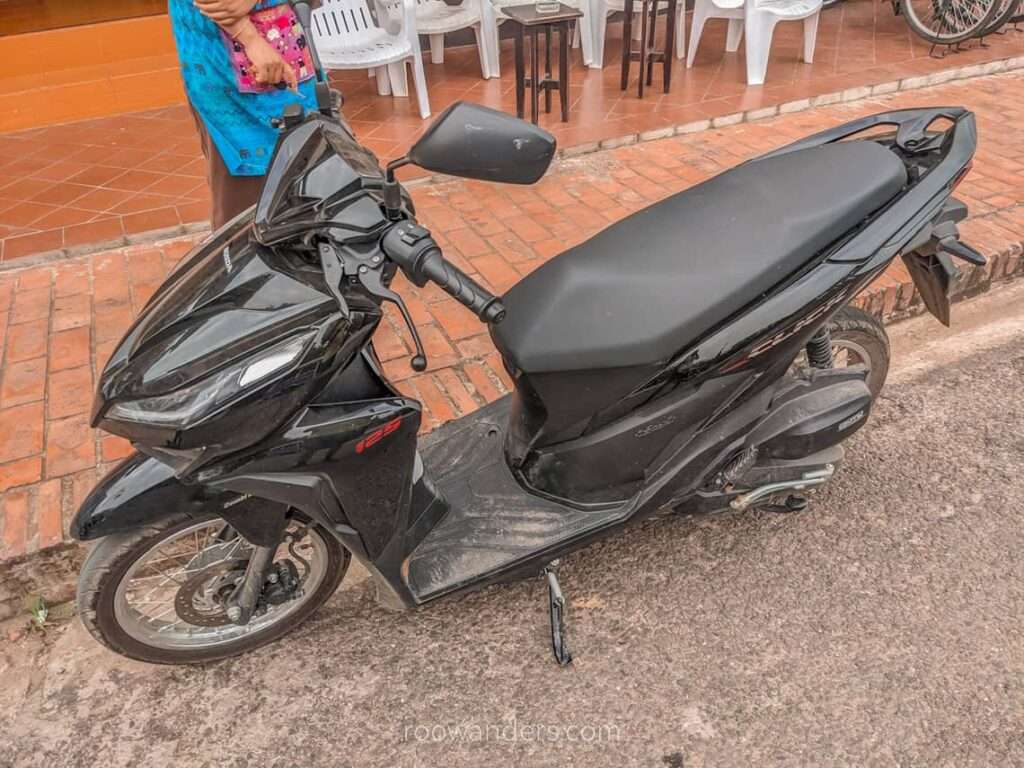
Attractions and activities around Luang Prabang
One thing I like about Luang Prabang is the density of the attractions – most of them are within walking distance of each other! For those in the outskirts, a tour, or a motorbike if you do know how to ride one, can easily solve that.
Within the city centre
Phousi Hill
Phousi Hill has to be on your agenda for the gorgeous Luang Prabang sunrise or sunset!
The 100 m small hill at the city centre features many Buddhas, temples and superb views of the city as you meander up. At the end of the 300+ steps climb is the Wat That Chomsi stupa, and the panoramic visage of Luang Prabang city and the faraway misty mountains.
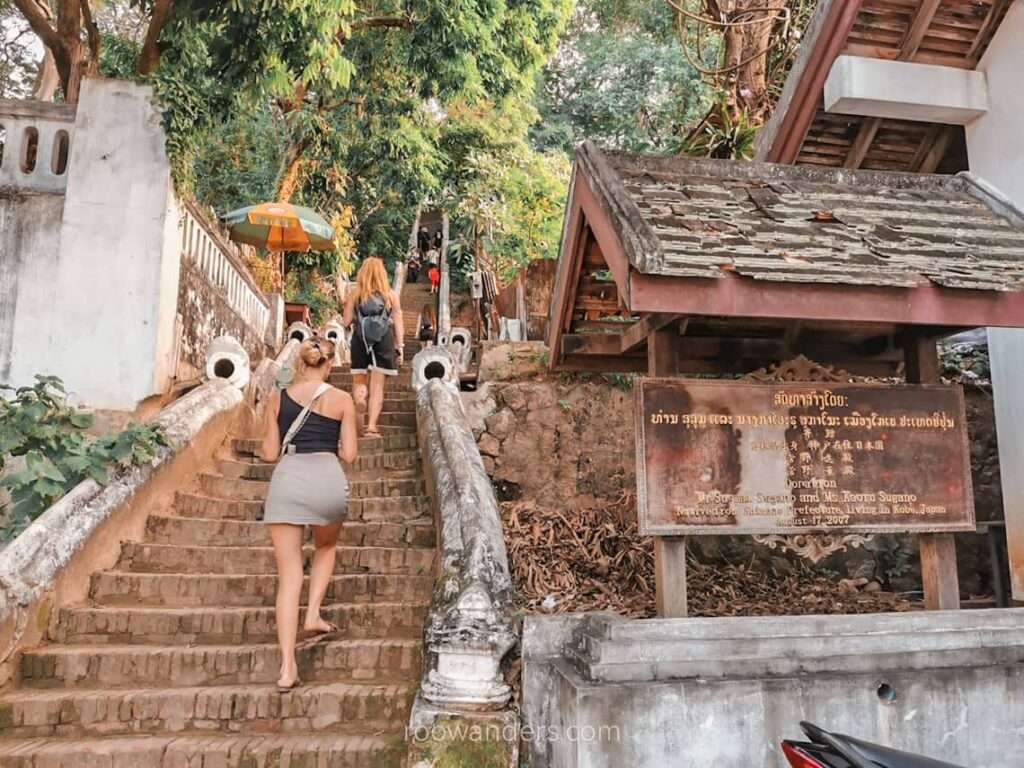
Three stairways lead up to Phousi Hill: (1) opposite the Royal Palace Museum on Sisavangvong Road; (2) opposite Nam Khan River along the quiet Kingkitsarath Road; and (3) in-between both major roads mentioned, on a small street.
I climbed Phousi twice – once from the small street for sunset and another from Kingkitsarath Road for sunrise. The descent was via the first entrance mentioned.
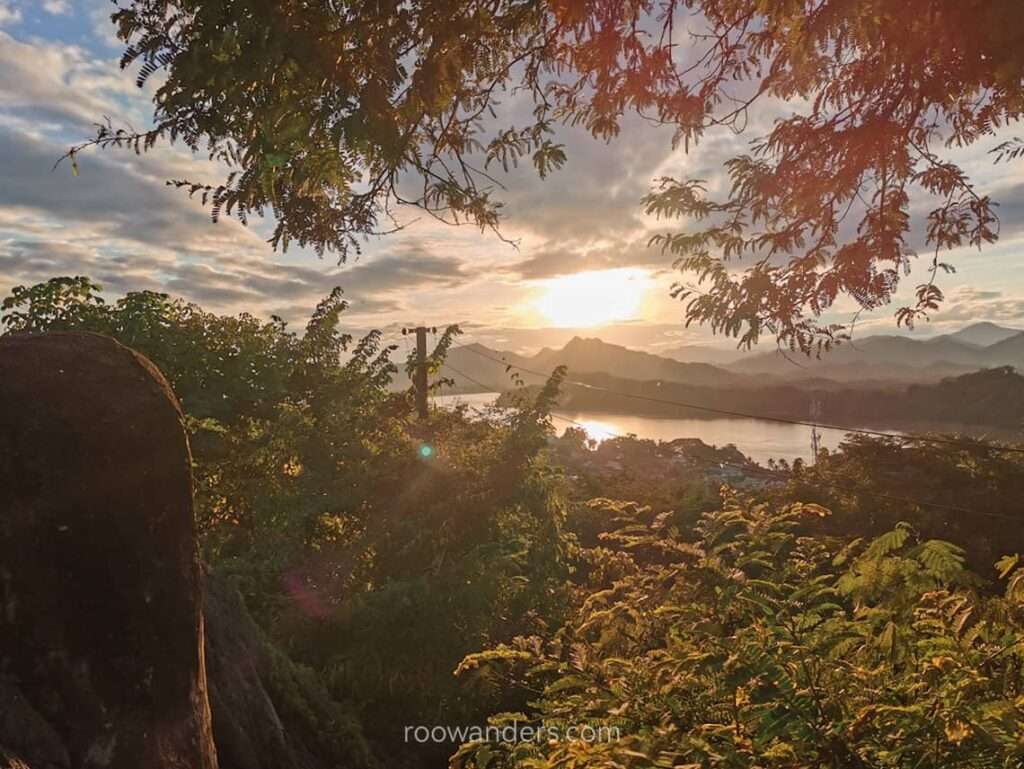
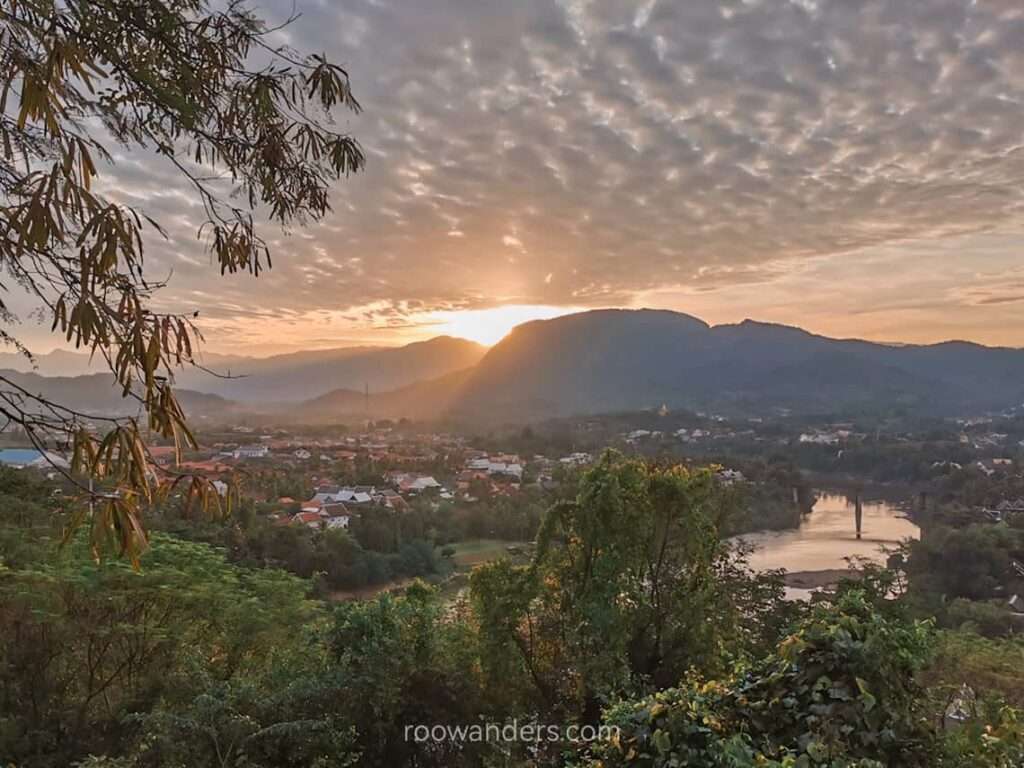
Somewhere along the way, you’d encounter a ticket booth for all three routes. It costs 20k kip for entrance, but the counter was closed when we went up for sunrise right after the early morning Alms Giving.
Make sure you start the climb early for sunset, which naturally attracts a bigger crowd.
Royal Palace
Next on your list ought to be the Royal Palace.
Built in 1904 during the French colonial era, The Royal Palace was home to King Sisavang Vong. After the King’s demise, the palace continued to be occupied by his son – and successor – until the capture by Pathet Lao in 1975. Thereafter, it became a museum for artefacts left by the monarchy.
Hop over to Wat Ho Pha Bang, the greenish gold grand temple on the right as you enter the compound, for the national treasure – an 83 cm golden Buddha known as Pha Bang. Pha Bang represents the sovereignty of Laos and where Luang Prabang derived its name.
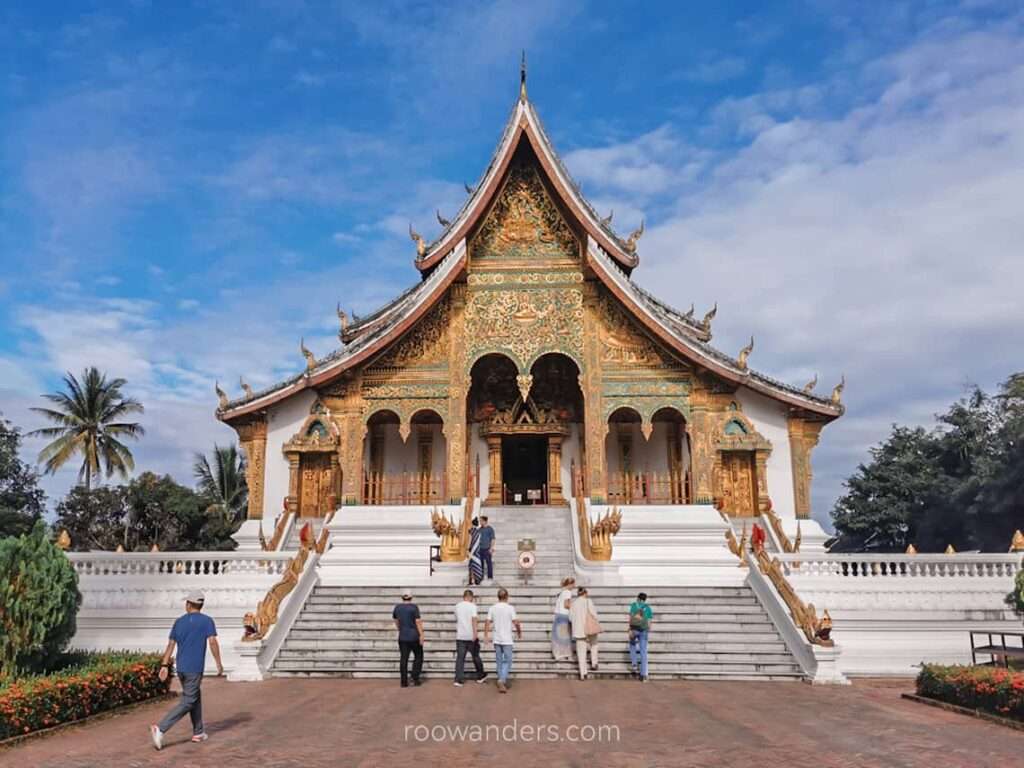
A ticket to the Royal Palace costs 30 k kip. Photography and bags are not allowed within the Royal Palace. You may leave the bags for free in a locker room at a corner of the compound. The Royal Palace is open from 8 AM to 4 PM with a 2-hour lunch break.
Wat Xieng Thong
Also known as the ‘Golden Tree Monastery’, Wat Xieng Thong is one of the largest temples in Luang Prabang with great historical importance. Situated at the joint between the Mekong and Nam Khan Rivers, the temple has seen the coronation of several Lao kings and was the gathering place for annual festivities.
Originally built in the 16th century by King Setthathirat, Wat Xieng Thong has narrowly missed destruction from the Siam invasion and several other minor skirmishes. Restoration started in the 1960s on the roof and entrances to maintain the integrity of the compound.
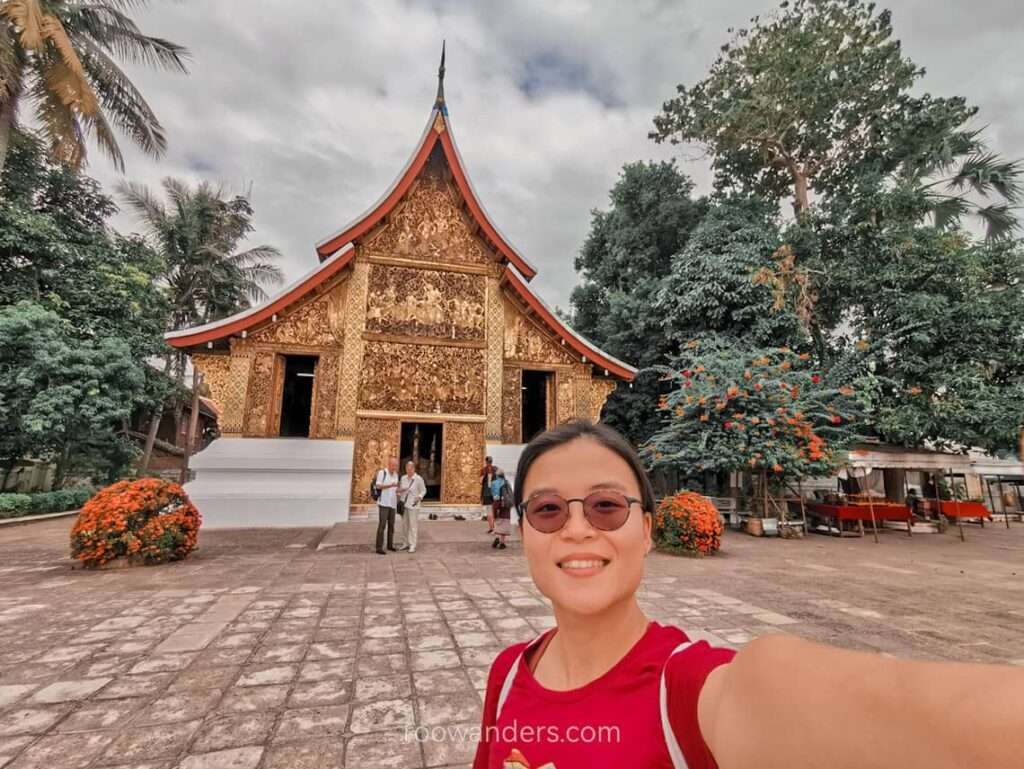
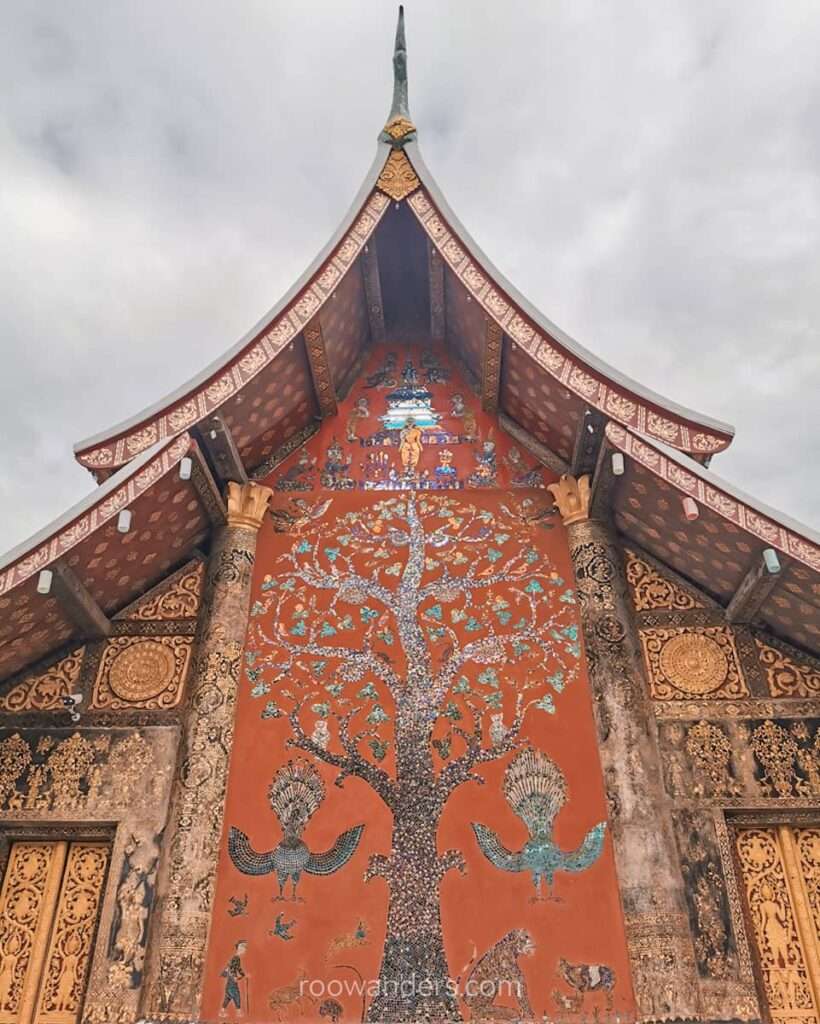
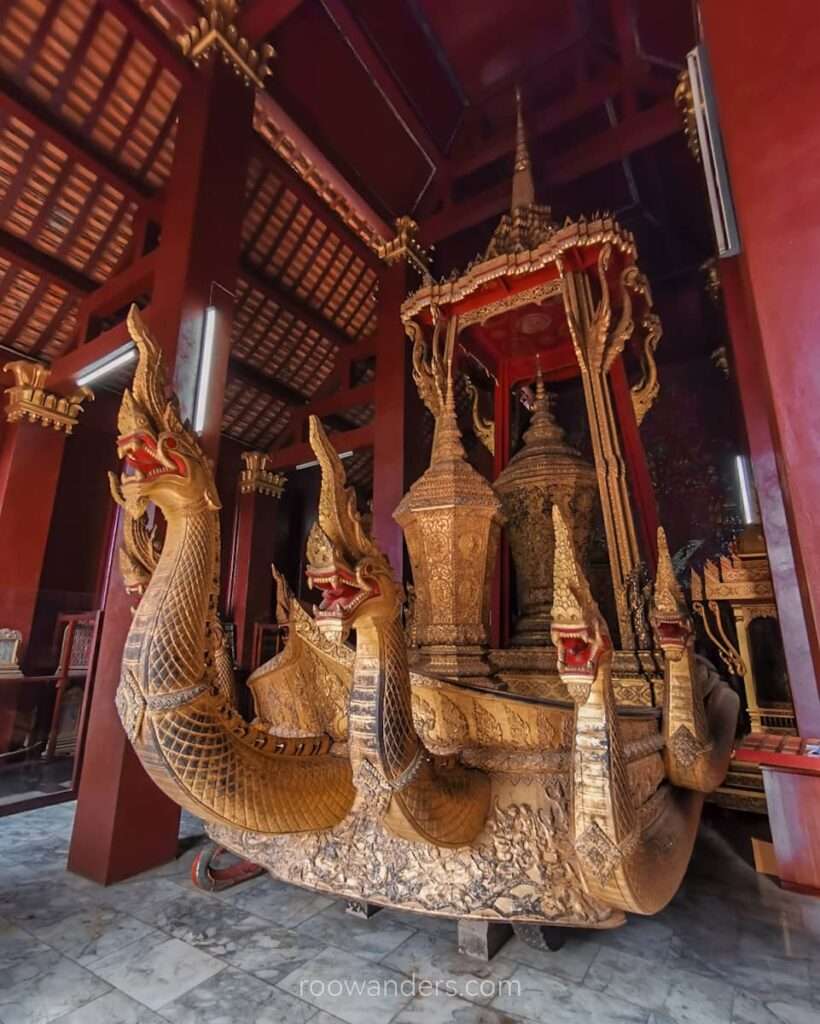
Check out the Tree of Life while you’re there! You could pay a small fee outside one of the buildings to have chants and a lucky bracelet tied around your wrist.
Ticket cost 30k kip. The temple is open everyday from 8 AM to 5 PM. Entrance is via Kounxoau Road, and you’d exit to Khem Khong which faces the Mekong River.
UXO Lao Visitor Centre
Did you know that Laos is the most heavily bombed country in the world? This landlocked country, neighbour to Vietnam, was a casualty of a secret war between the US troops and the communists from 1964 to 1973.
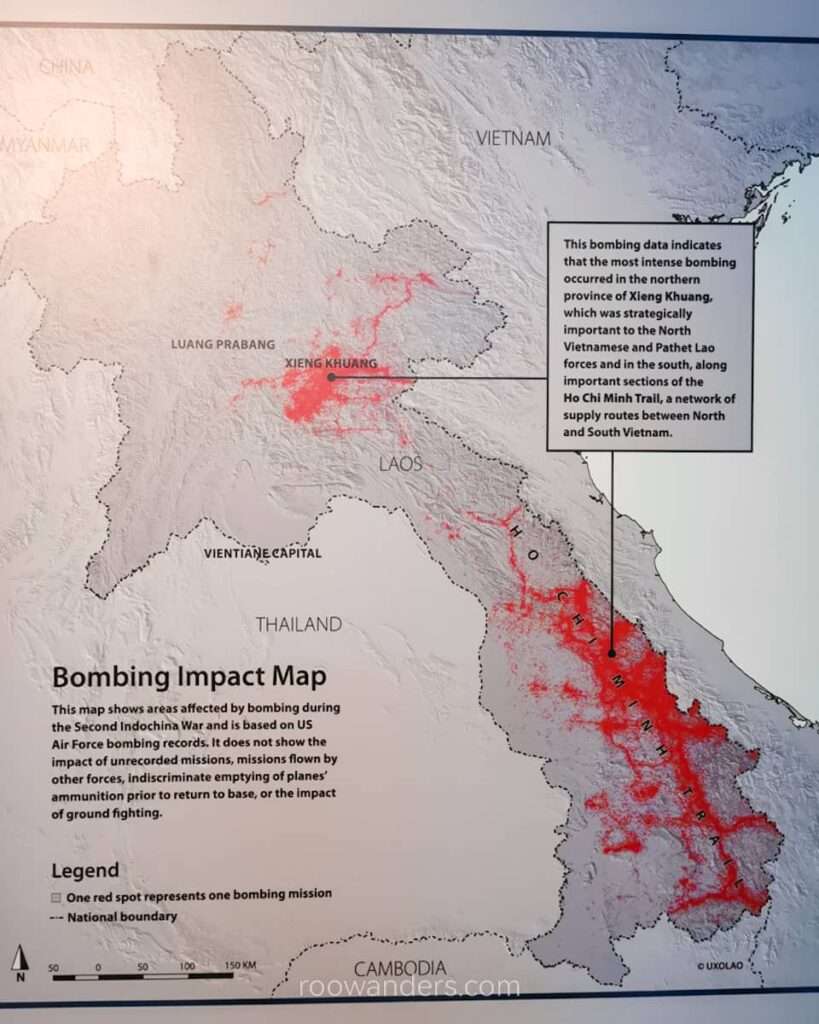
While most of us would have an inkling of the Vietnam War, little is known about this Secret War fought in Laos. And makes a trip to the UXO Lao Visitor Centre that much worthwhile.
As with the COPE Visitor Centre in Vientiane, the small museum left me much more informed about the horrors of this lesser-known war. Within the museum are displays of real-life deactivated bombies and guns, recounts of survivors, and a documentary about the ongoing work of bombies removal.
There’s no entrance fee for this one, but donations are highly appreciated. The visitor centre is open from 8 AM to 5 PM with a lunch break in between.
Alms Giving Ceremony
While I did not participate in the Alms Giving Ceremony, it was still worthwhile to witness the ritual, which begins between 5.30 and 6.30 AM every day.
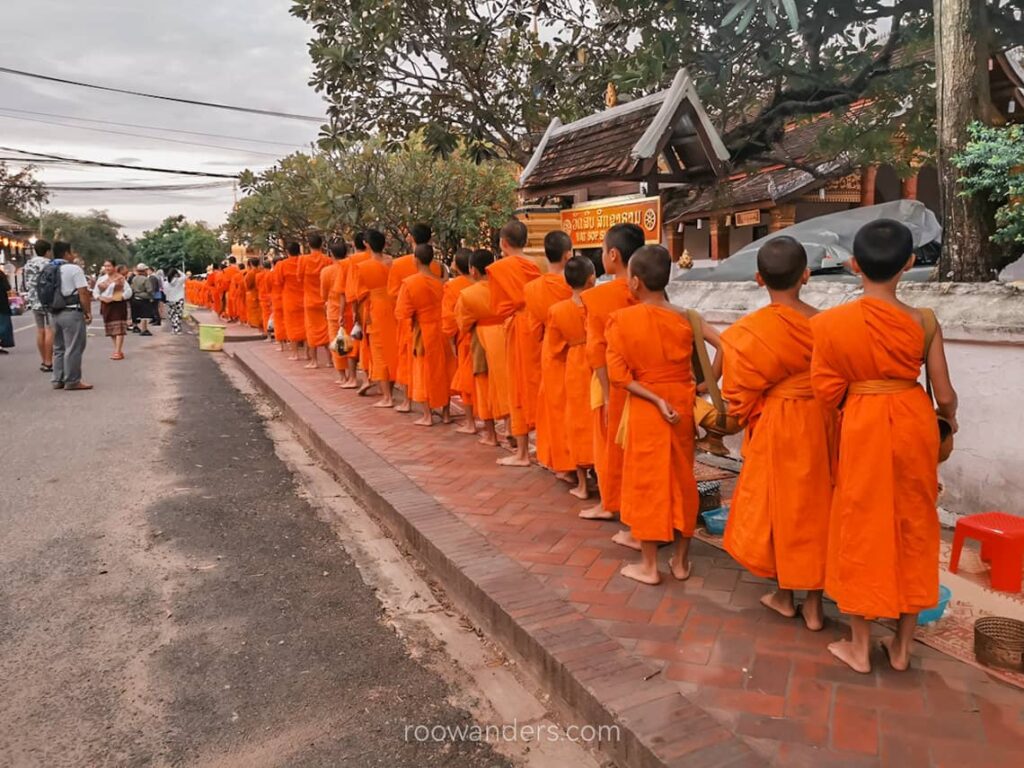
Alms Giving, or Sai Bat, is a religious ceremony the Lao holds with the highest regard. The ceremony is meant to be reciprocal between the giver and the monk. In exchange for the food that feeds the monk, the layperson gathers good merit/ karma for their next lives.
But the ceremony seemed to lack originality or essence when I was there, as most of the food given out was either sticky rice or packaged processed confectionery that I doubt the monks live on. There were also vendors going around selling the same food.
Also, givers are supposed to kneel and assume a respectful pose. But what I saw were plastic stools and tourists taking photos and selfies, which made the whole experience rather strange and commercialised.
Anyhow, if you’d like to participate in this procession, note that Sai Bat takes place all over Luang Prabang, but is especially popular along Sisavangvong Road from Wat Mai. The Sai Bat I saw was along Sakkaline Road between Wat Sensoukharam and Wat Sop Sickharam. Be respectful and observe its religious importance if you are assuming the role of a giver. And please prepare your food in advance and not from those street vendors!
Garavek Storytelling
I thoroughly enjoyed myself in this hour-long storytelling! Garavek features a duo where one tells the folklores of Luang Prabang, and the other plays the khene – a handmade bamboo mouth organ.
Through this hour-long performance, I learnt about the myths behind Phousi Hill – related to Hanuman – the meaning of Garavek, Xieng Ming the trickster, and Putthasen.
They have shows every day from 7.30 to 8.30 PM. Tickets cost USD 5 or 100k kip.
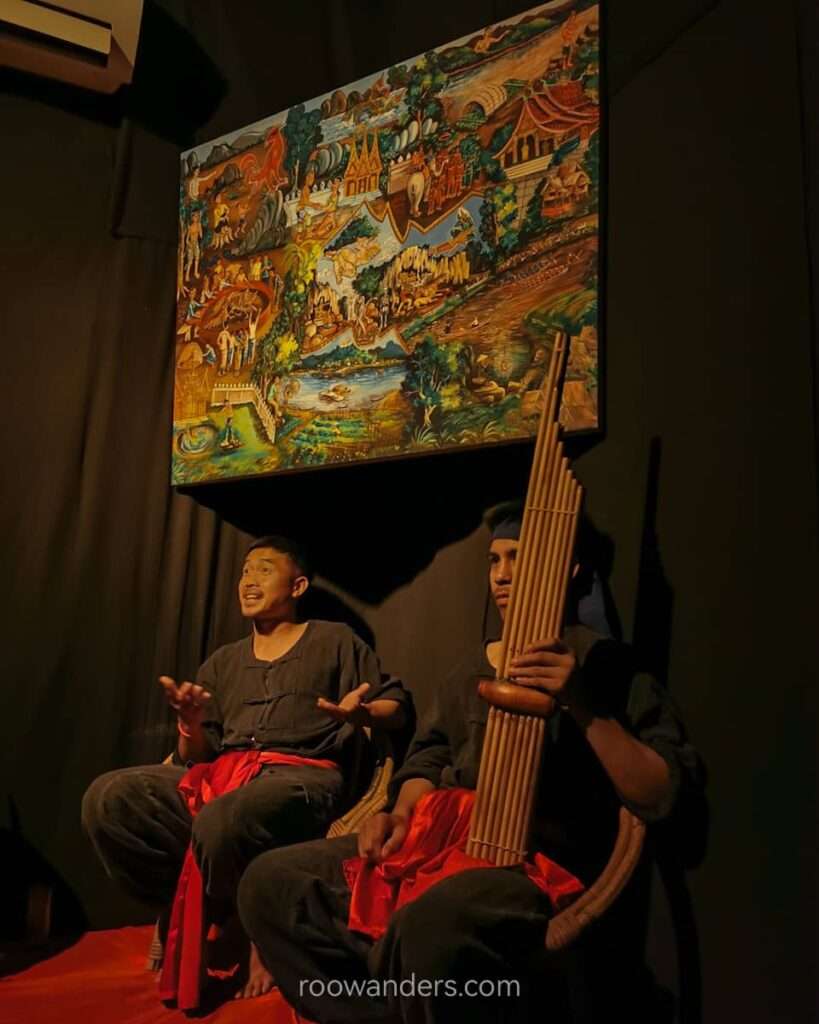
Traditional Arts and Ethnology Centre
Calling all artists and fabric hobbyists, the Traditional Arts and Ethnology Centre is the museum to head over and learn the crafts of Laos’ diverse ethnic cultures!
Apart from the fascinating and informative exhibitions, you could also purchase a piece home as a souvenir or gift for your loved ones from their shop.
The entrance fee costs 30k kip, and the museum is open everyday from 9 AM to 9 PM except on Mondays. They have a free guided tour (you need a ticket first!) every Tue and Thu at 3 PM.
Enjoy a cuppa in the cafe
There are plenty of delicious and delightful cafes in Luang Prabang for the digital nomads and those looking for a break from the afternoon heat. If you like croissants and other French pastries, head over to Le Banneton Cafe near Wat Xieng Thong.
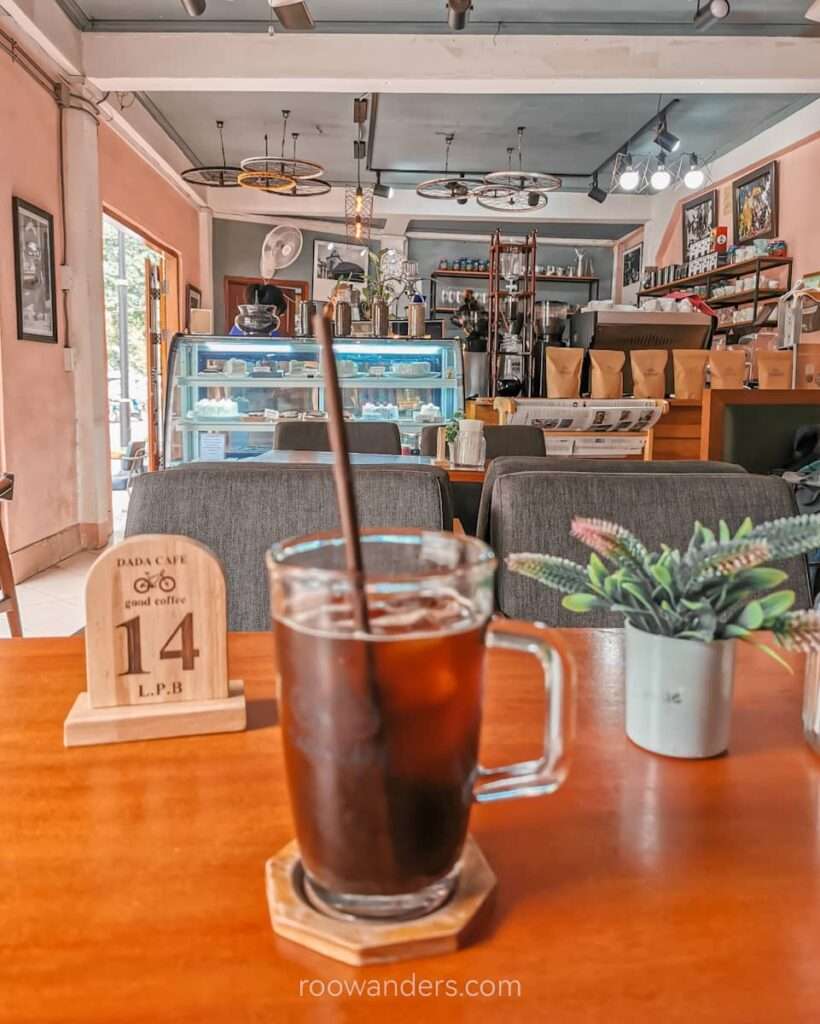
I stopped at DaDa Cafe for an iced black coffee after spending hours exploring the city. DaDa makes for a nice stop as its seats overlook the Mekong River. They have single-origin coffee beans and freshly brewed coffee from the Lao countryside.
There’s also the Saffron Cafe and the Big Tree Cafe. Both have excellent Google reviews and are down the same street as DaDa.
Go for a relaxing massage
Several massage parlours in Luang Prabang have relatively good reviews and massages at affordable prices to squeeze the knots away. We visited Nalin twice as the masseurs had firm hands, and the prices were very reasonable.
We later learned from friends that the most popular massage parlour is M.K Wellness Centre. Don’t judge the book by its cover! While this centre may look shady and dingy from the outside, they have very high reviews and reservations are strongly recommended!
Temple Run
Apart from the grand Wat Xieng Thong, there are several more temples to check into, that is if you haven’t caught the temple fatigue!
Temples I’ve visited include Wat Mai Monastery beside the Royal Palace, Wat Sensoukharam, Wat Sop Sickharam (both are along the Sai Bat area), and Wat Wisunarat (for its proximity to my hostel).
Wat Mai used to be the palladium holding Pha Bang, the Buddhist emblem – the main reason I visited right after the Royal Palace after reading about it. Given its location to the palace, it was naturally one of the most splendid-looking temples in Luang Prabang with walls of intricate designs in gold! The temple was deemed so beautiful by the intruders that it was spared from destruction in the 1880s. Tickets cost 20k kip.
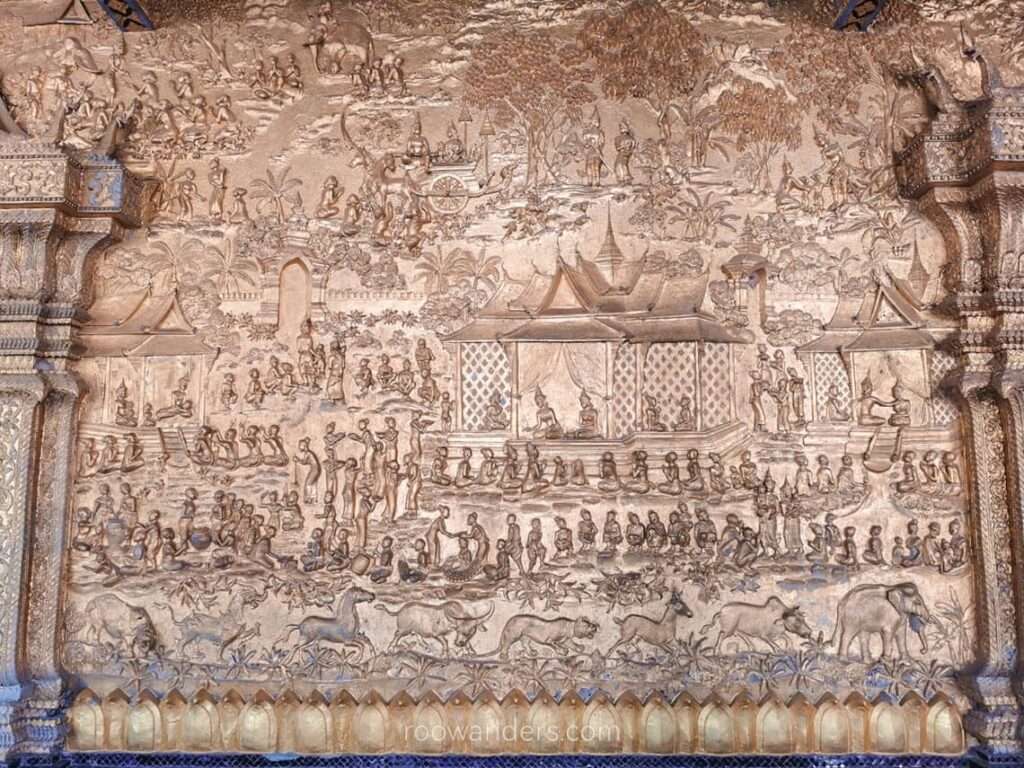
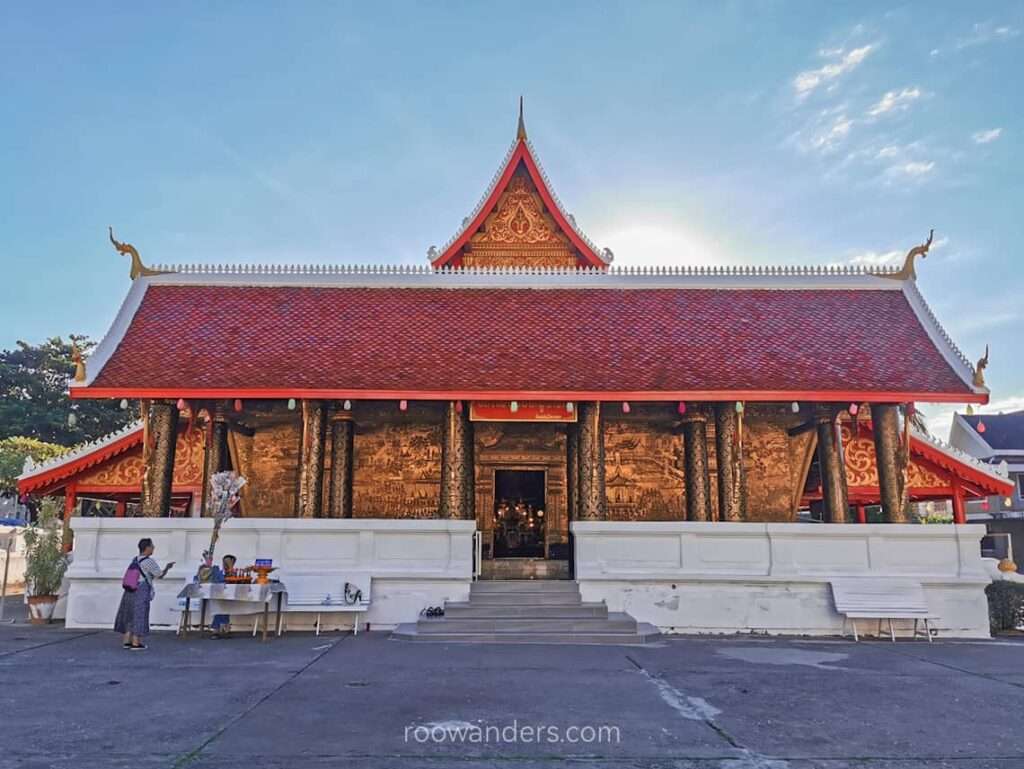
Wat Wisunarat, or Visounarath, is Luang Prabang’s oldest temple. Built in 1512 during the reign of King Visounarath, the temple once housed Pha Bang twice from 1513 to 1715 and later from 1839 to 1894. Within the same compound is That Pathum, or the Stupa of the Great Lotus, built 2 years later, commissioned by Queen Phan Tee Xiang. It is free to visit this temple.
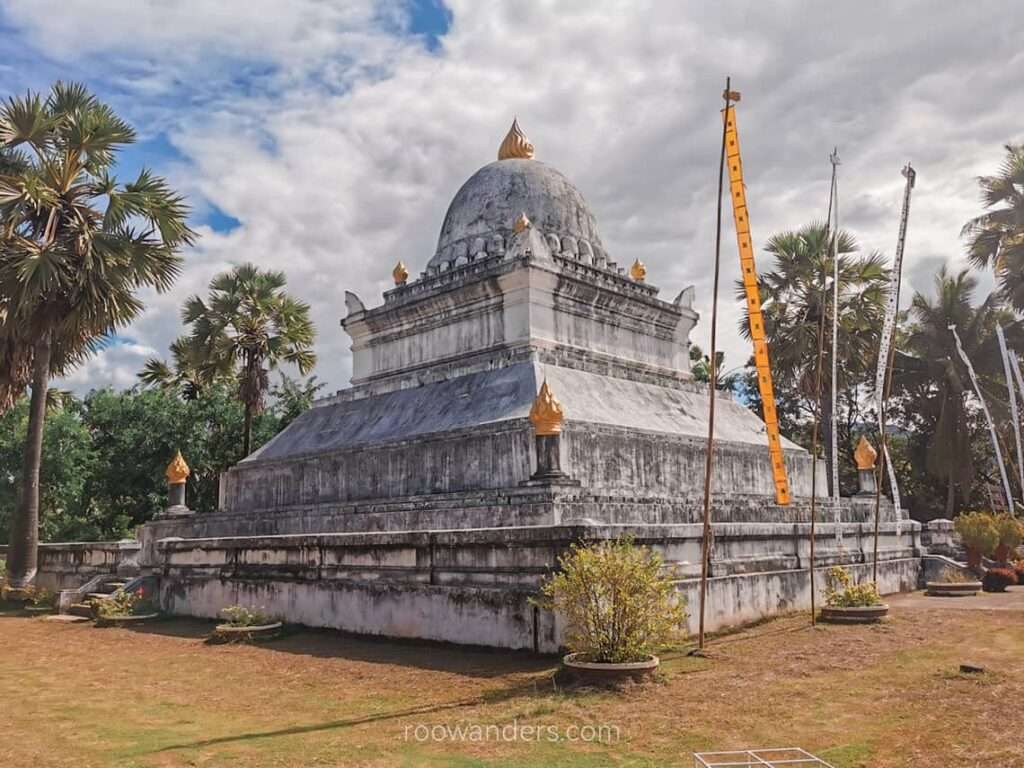
Wat Sensoukharam, built in 1718 during the reign of King Kitsarath, is believed to have been constructed using 100,000 stones from the Mekong River – hence its name, ‘The Temple of 100,000 Treasures’. It is free to visit this temple. Check out the Standing Golden Buddha on top of the shrines and other smaller buildings within the temple ground.
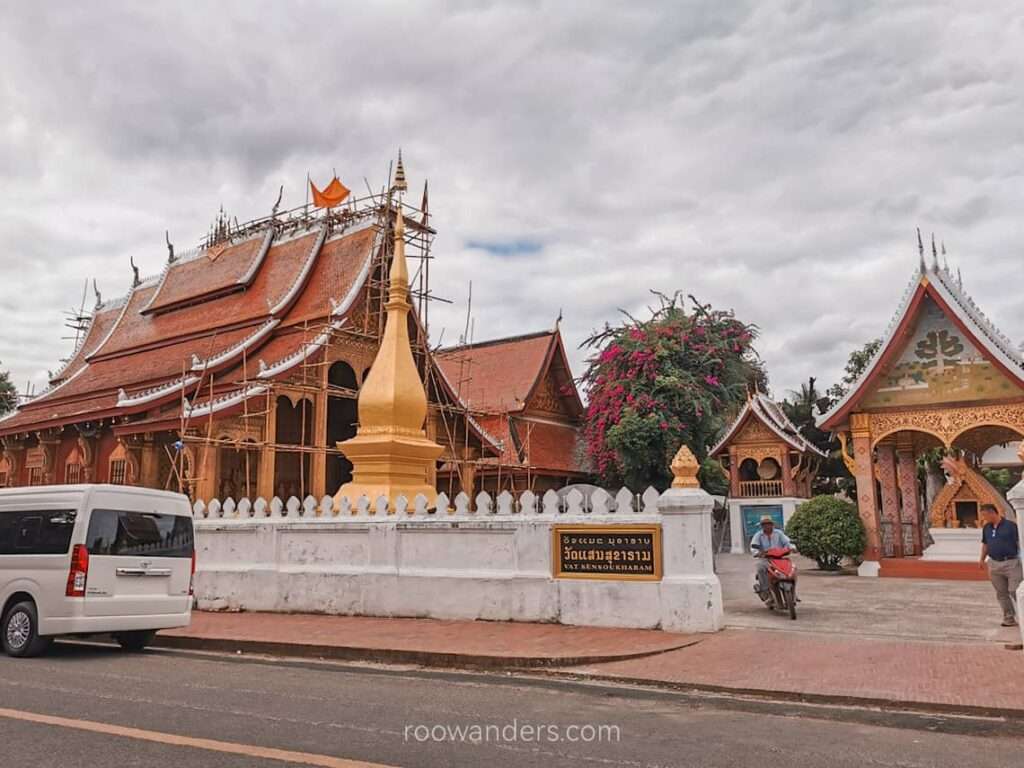
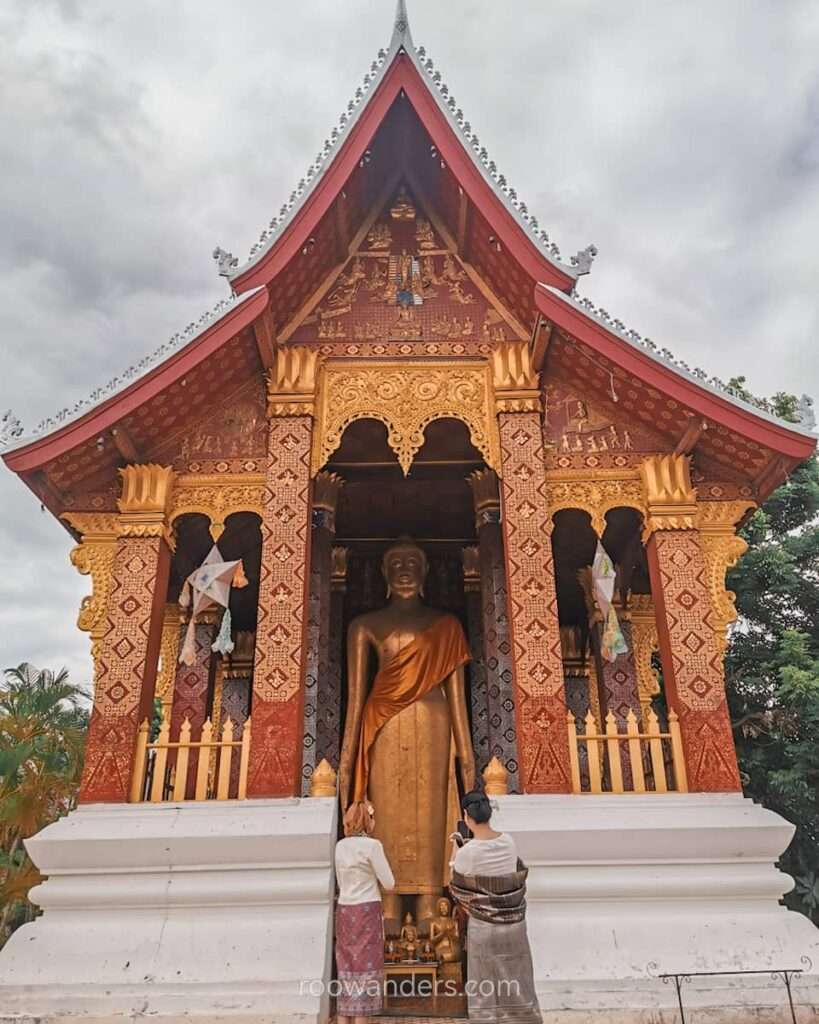
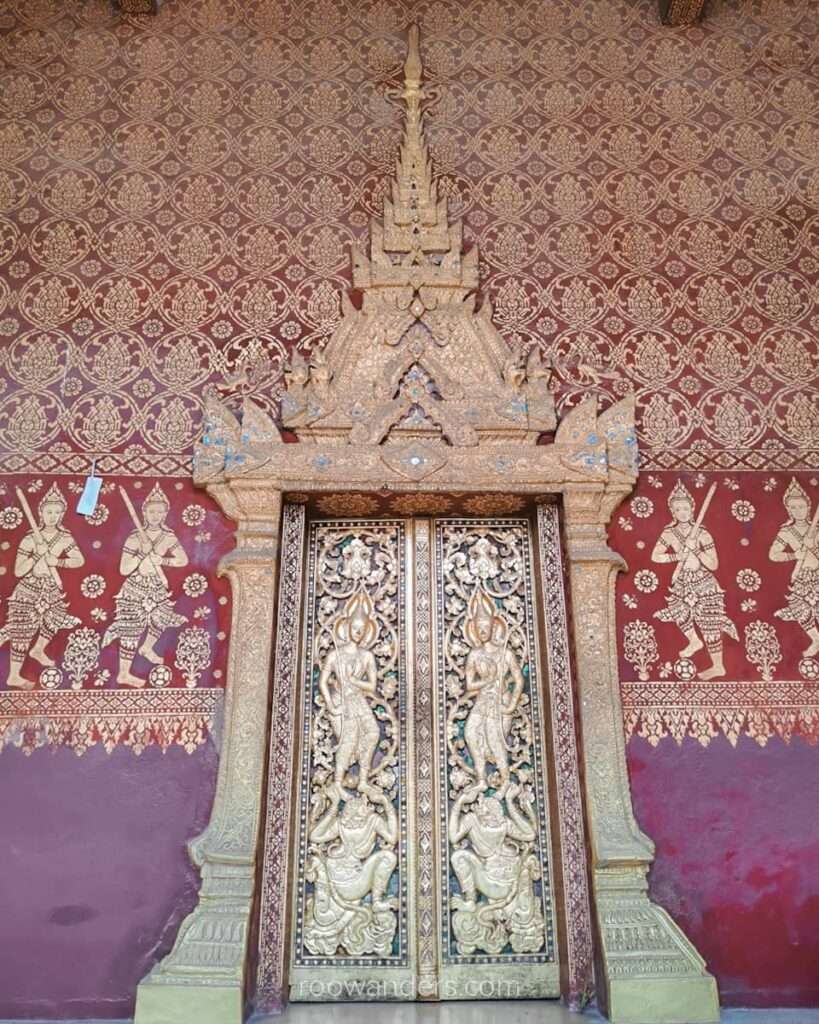
Sunset cruise by the Mekong River
If you’d like to relax under the bewitching golden hues and alluring Mekong breeze, head over to one of the handful of sunset cruises along the banks. Sa Sa Sunset Cruise is the first company I’ve heard of and thought of going if I’ve run out of activities in Luang Prabang. Sadly, what ran out for me was time. It costs around US$11 for a drink on the two-hour scenic ride.
Alternatively, hop over to River Sun Laos next to Wat Xieng Thong. I’m not commissioned, but this happened to be the family business of one of the hospitable Lao dudes I met while having a roadside dinner in Vientiane. They’re more luxurious.
I visited the lower part of Mekong River - the Mekong Delta - during one of my trips in Vietnam. Read more about it here!
Take a yoga class
And if you have plenty more time and energy in Luang Prabang, why not stretch and relax over a yoga class? It costs less than US$10 for an hour of Vinyasa at Luang Prabang Yoga, and they have two sessions daily – afternoons and in the evenings. Would have been splendid if there was an early morning session – sun salutations over sunrise!
Outskirts of Luang Prabang
Pak Ou Caves
Situated around 25 km north of Luang Prabang, Pak Ou Caves featured over 4000 Buddhist statues, unlike the temples we’ve seen in Laos. History has it that ancient tribes once inhabited the caves for religious purposes.
According to Lao history, the royalties and folks worship the river spirit in Pak Ou Caves. They left behind Buddhist statues every year after the pilgrimage. With each passing year, the number of statues left behind grew, eventually settling in the thousands!
There are two levels to this cave temple-of-sorts – the lower cave features thousands of statues and that of a hermit; the upper cave has an altar and more (and bigger) Buddhist statues.
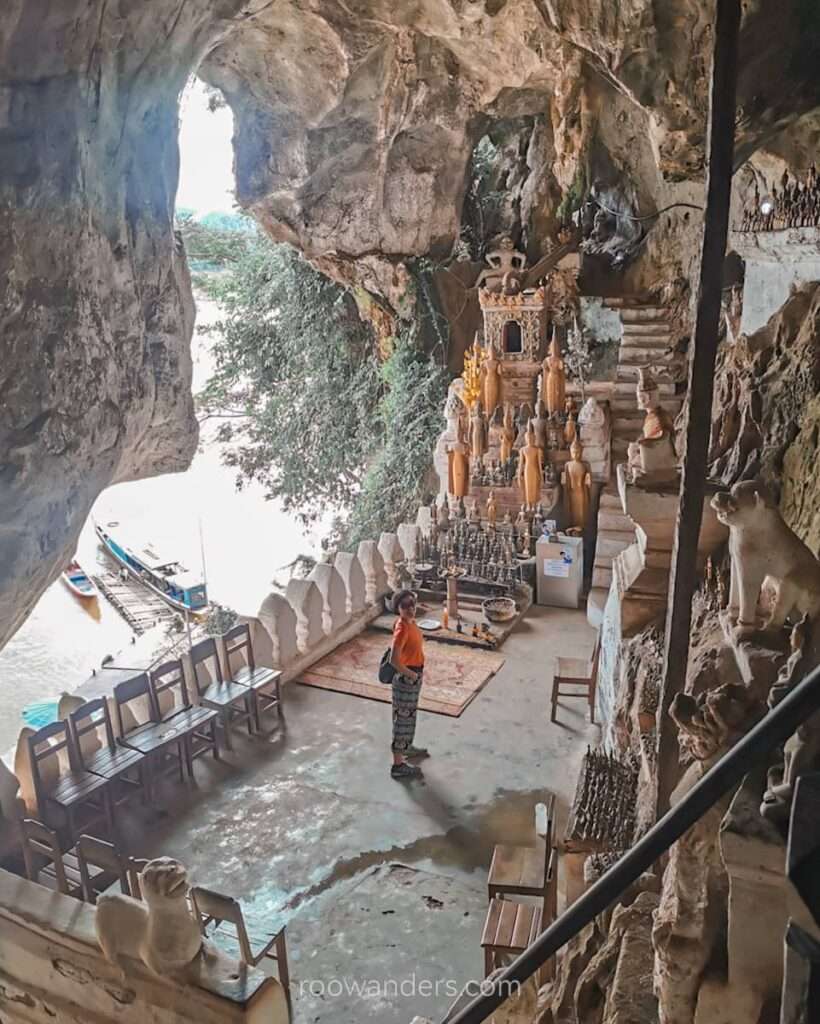
Entry into Pak Ou Caves costs 20k kip, but getting there from Luang Prabang can be tricky. More about this in a separate post.
Elephant Camp
Laos is known as the Land of a Million Elephants, so it won’t be a surprise if you’d like to interact with one. But choosing which camp to go with that aligns with your values takes a bit of investigation as you wouldn’t want one that does not benefit, or even ill-treat, these magnificent mammals.
Manifa happened to be on the way between the road of Pak Ou and Luang Prabang for us, and we stayed long enough only to take a glimpse of the elephants. They have full-day tours that let you experience the life of a mahout, where you get to wash, feed and ride the elephants.
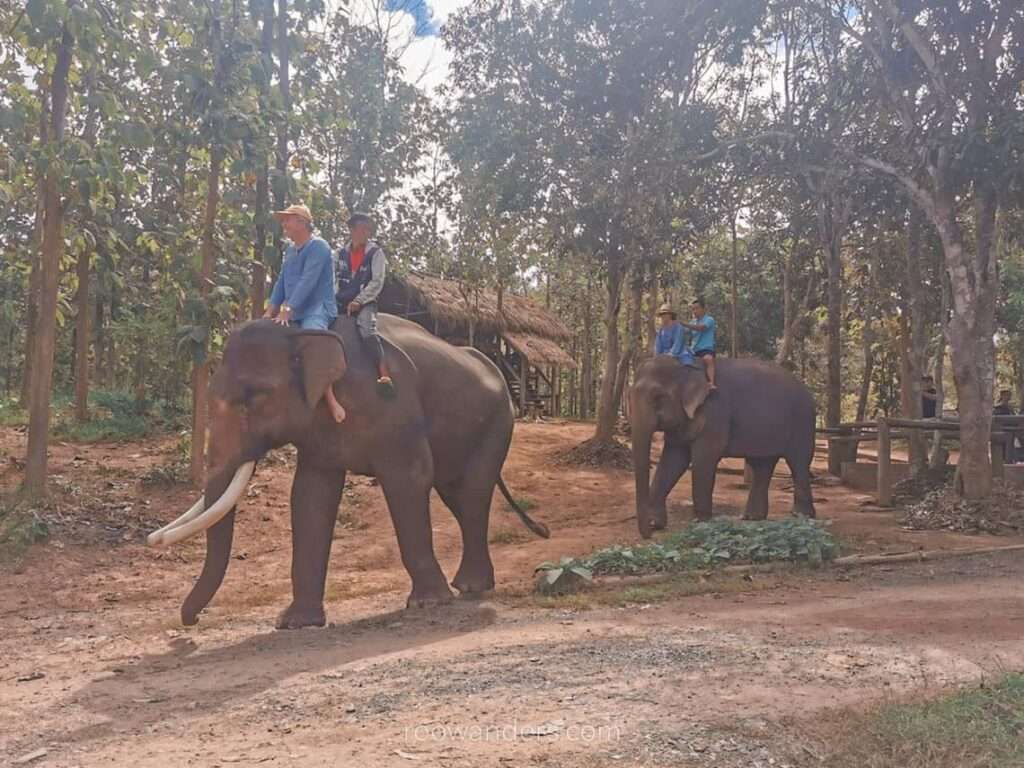
If riding an elephant is against your values, look through Responsible Travel for operators who do not promote elephant riding. There’s only one in Luang Prabang – MandaLao Sanctuary.
Kuang Si Waterfall
You haven’t really been to Luang Prabang if you haven’t been to Kuang Si – was what someone (I’m sorry for not remembering who!) said. Located 45 minutes south of Luang Prabang city, Tad Kuang Si is a sight to behold!
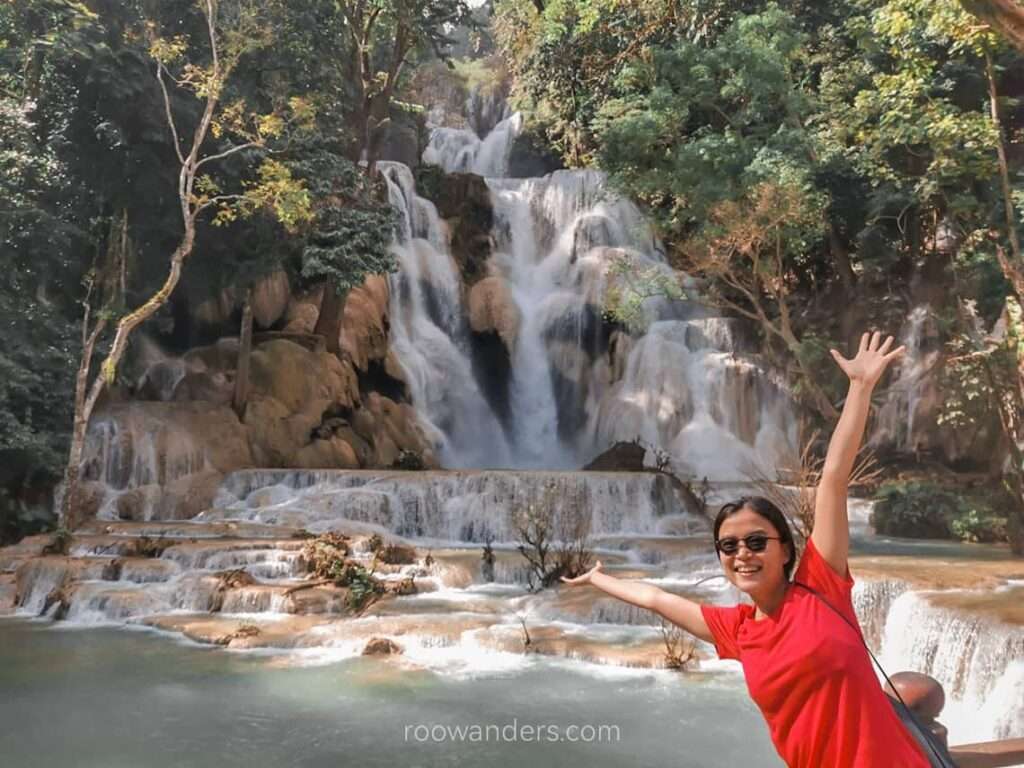
The three-tier cascade has beautiful dusty blue water reminiscent of the waters I’ve seen in New Zealand. We spent the better half of the day early, hiking and checking out all the possible swimming holes, before choosing one to dip and savour the cool and refreshing water.
Tickets into Kuang Si Falls cost 25k kip, which includes the free shuttle and the Black Bear Sanctuary.
Laos Buffalo Dairy
Post Tad Kuang Si, while on our way back to Luang Prabang, we stopped over at Laos Buffalo Dairy for some ice cream.
The Laos Buffalo Dairy Farm is a social enterprise aimed at improving the overall welfare of the rural population, with a focus on buffalo farming and childhood nutrition. The site also does farm tours and sells buffalo dairy products to fund their goals.
We had some delicious buffalo ice cream (50k kip) while another group of friends we recently met enjoyed their cheese platter. Overall, it was a wonderful experience. If you’d like to contribute more, you could join their farm tours and lend a hand at milking their buffaloes!
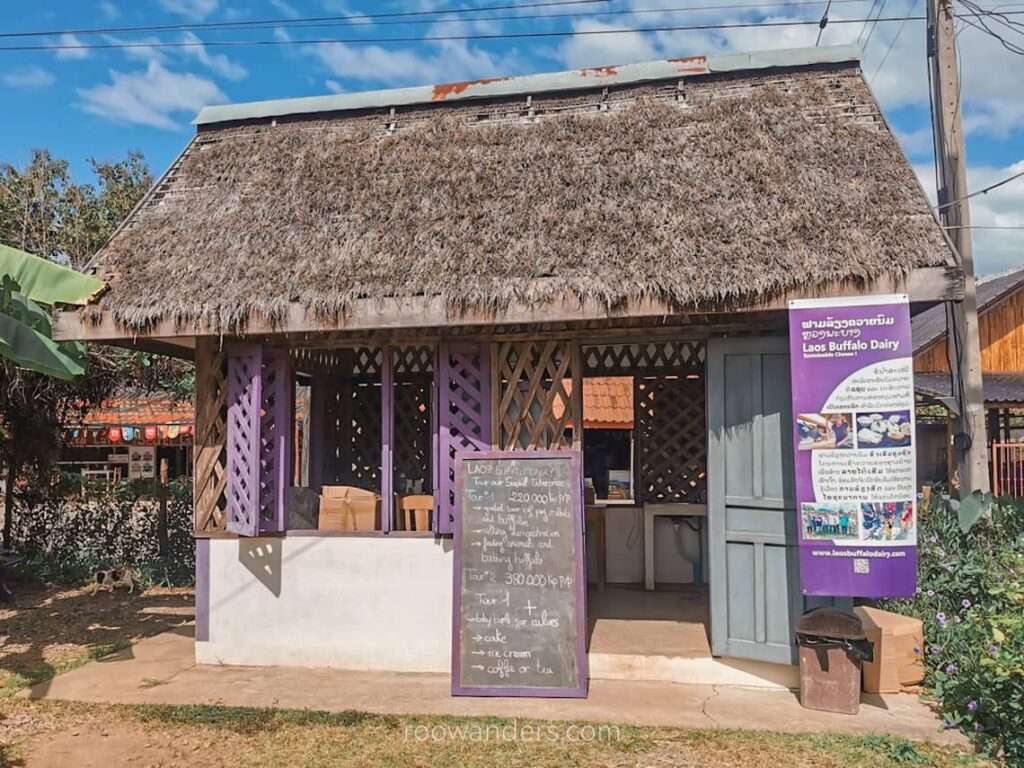
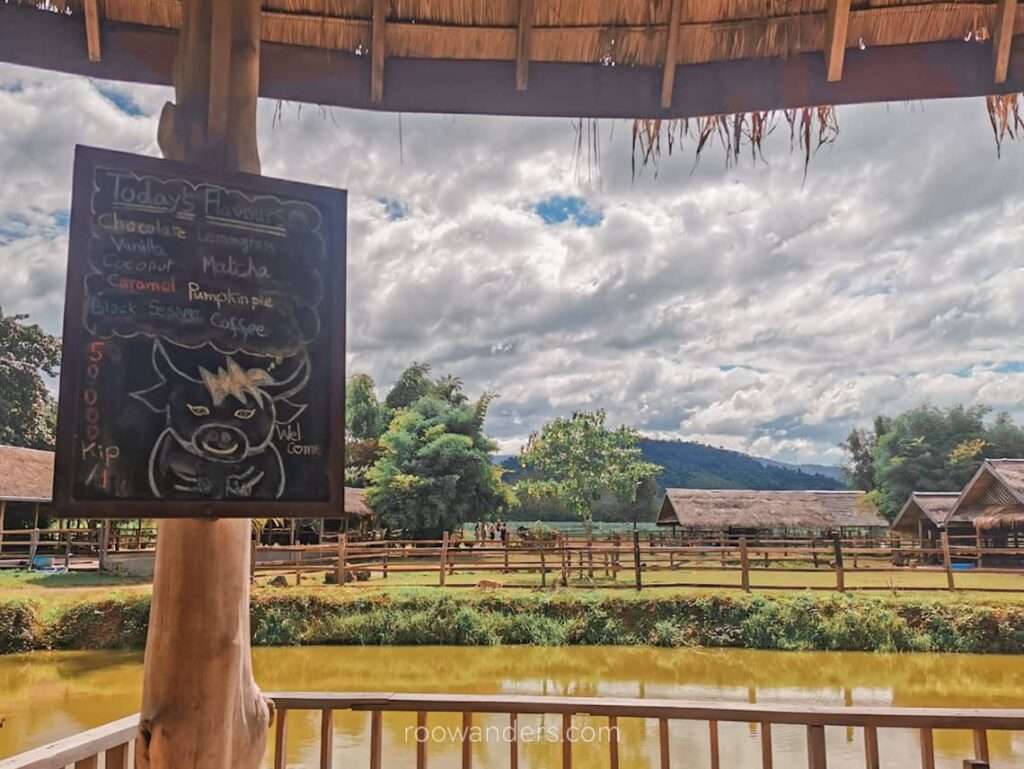
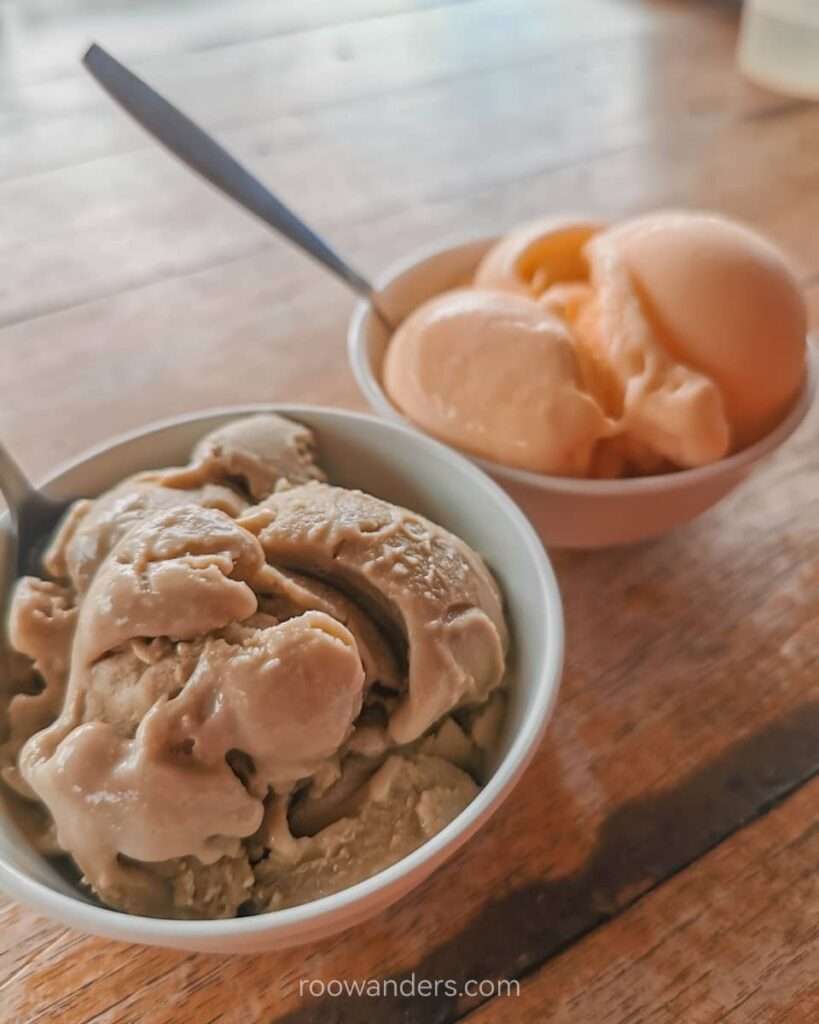
The Living Land Farm
The Living Land Farm is an organic farm that not only supports the local Lao community through jobs, education and land for farming their own food but also provides guests with the experience of living on a rice farm, farming the rice, and enjoying the fruits of their labour.
The farm is between Kuang Si Falls and Luang Prabang, about 6 km from the city. The Living Land Farm makes for a good half-day trip from Luang Prabang to learn more about rice farming before ending the day well spent with a delicious lunch.
Tad Sae Waterfall
Another one of those picturesque spots that ought not to be dwarfed by Kuang Si Falls, visiting Tad Sae is an adventure by itself.
It took us about half an hour to cover the 15 km of pothole-ridden roads to Tad Sae. From there, it was another boat ride and some hiking before we were satisfied with one of the water holes for a short soak/ swim.
Tickets into Tad Sae cost 15k kip, while the boat costs 15k kip. Parking by the ferry was 5k kip. Our motorbike rental was 150k kip/ day. You may get a tuk-tuk for around 200k – 300k kip from Luang Prabang (best to call in more people to share the cost!).
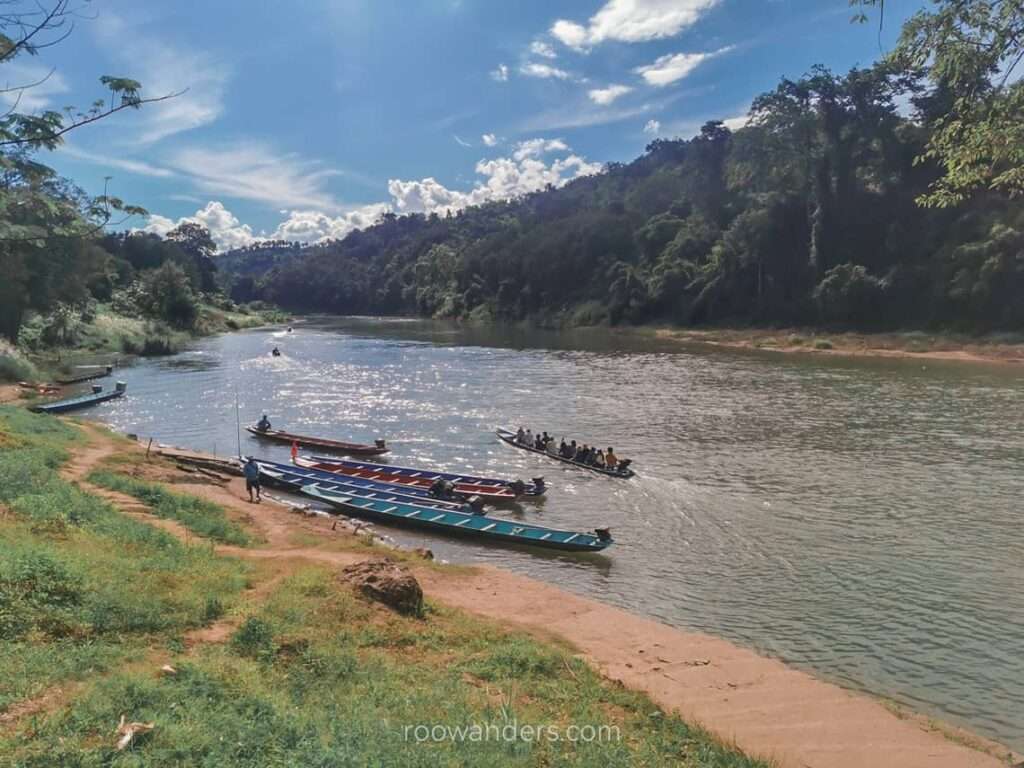
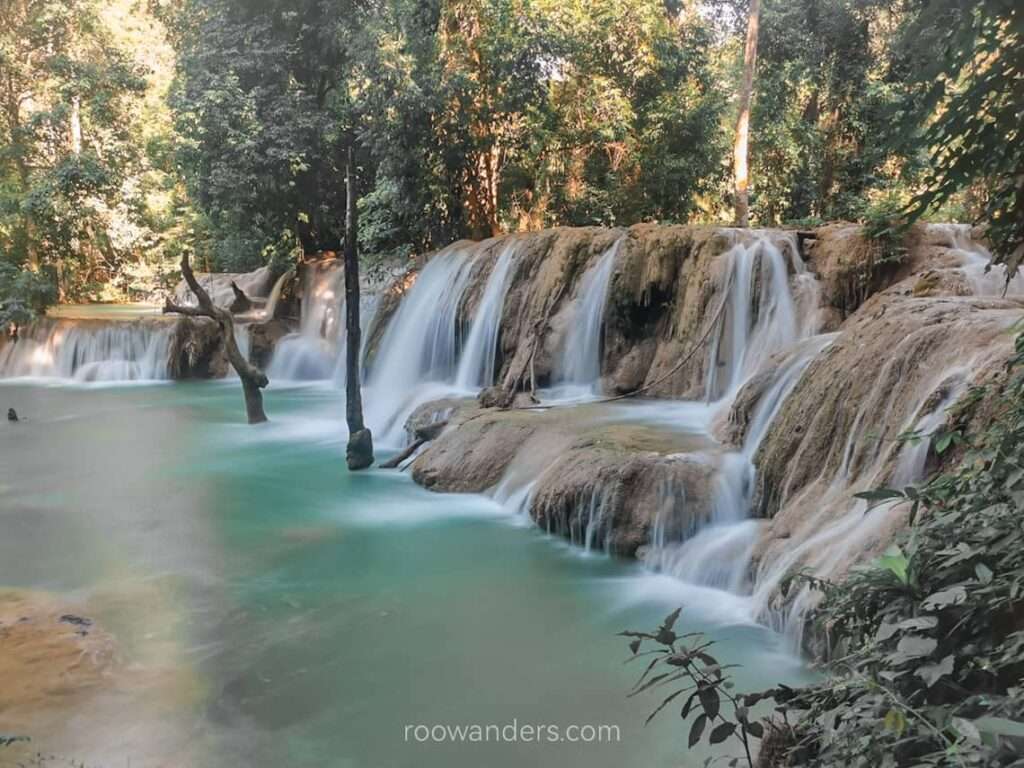
Places to eat in Luang Prabang
Market
Head over to the morning market for some delicious noodle soup for breakfast or the night market for an assortment of delicacies and juices for dinner. Both are within the block between Sisavangvong, Kitsalat, and Khem Khong Road.
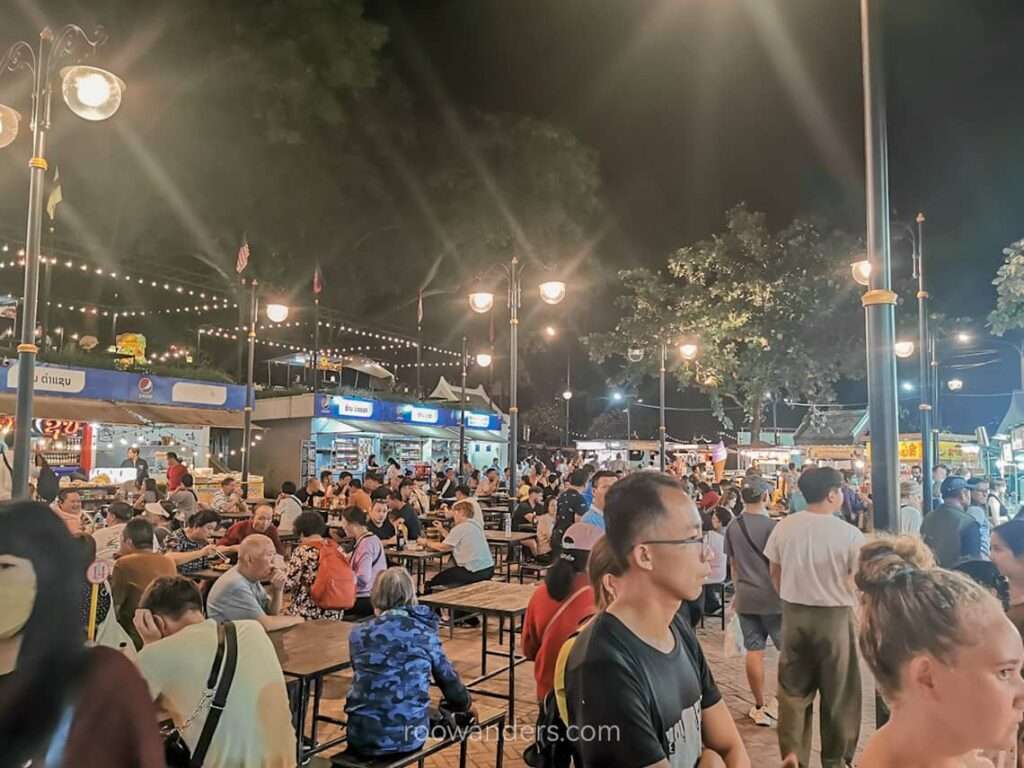
Noodle Soup
There are plenty of noodle soup eateries in Luang Prabang that I’m so grateful for! As a fan of soupy food, I’ve tried many variations and combinations of noodles for my Laos trip – tomato minced meat-based Khao Soi, the ubiquitous pho, and all sorts of meaty yellow noodles. You can find the places I’ve tried on the map above. Prices range from 25k to 50k kip.
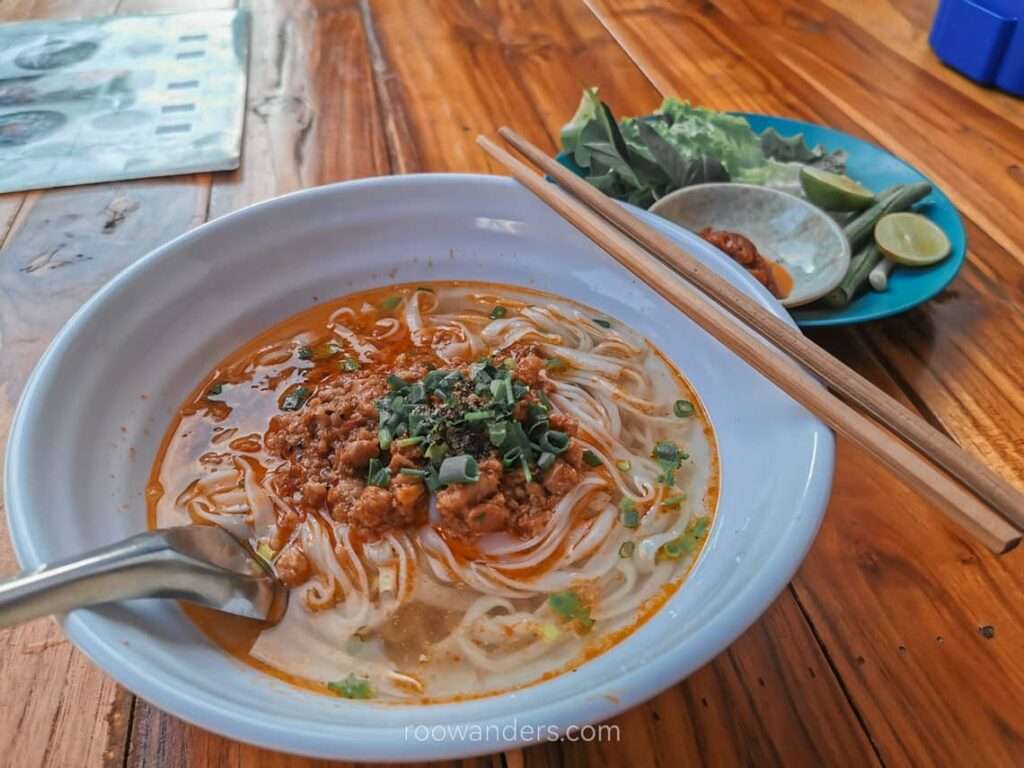
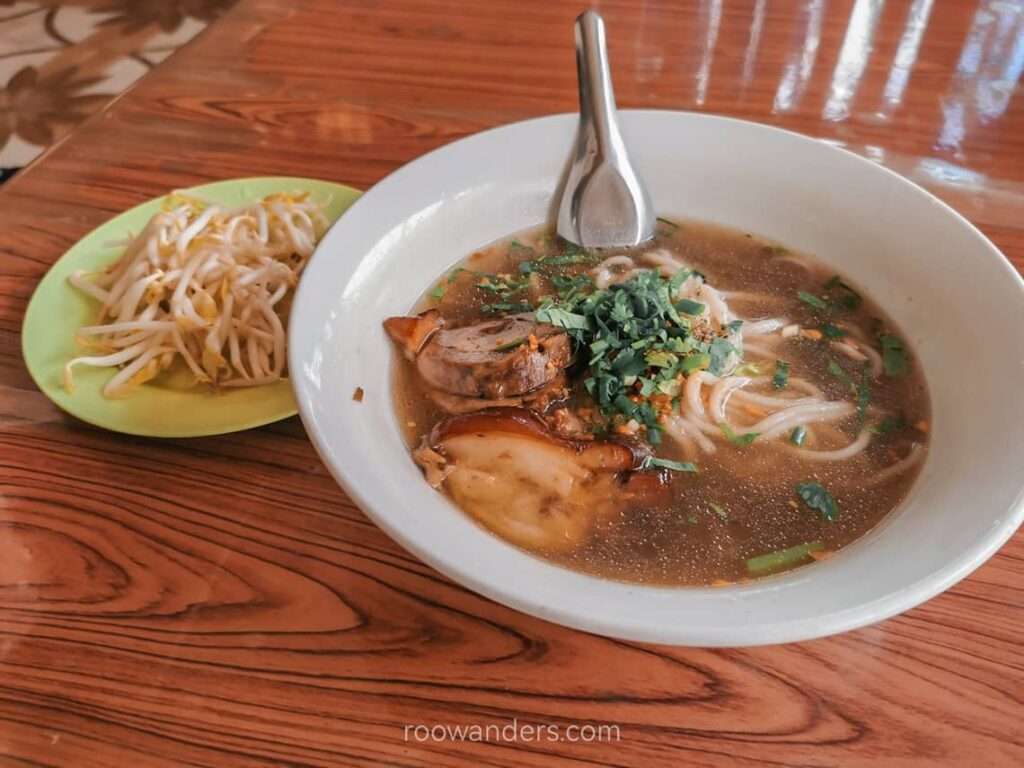
Family Restaurant
There are a few family restaurants, and we’ve frequented Ban Jek twice for their delicious rice and noodles dishes. I especially love their juicy pork-topped rice! You could solve a meal for under 50k kip.
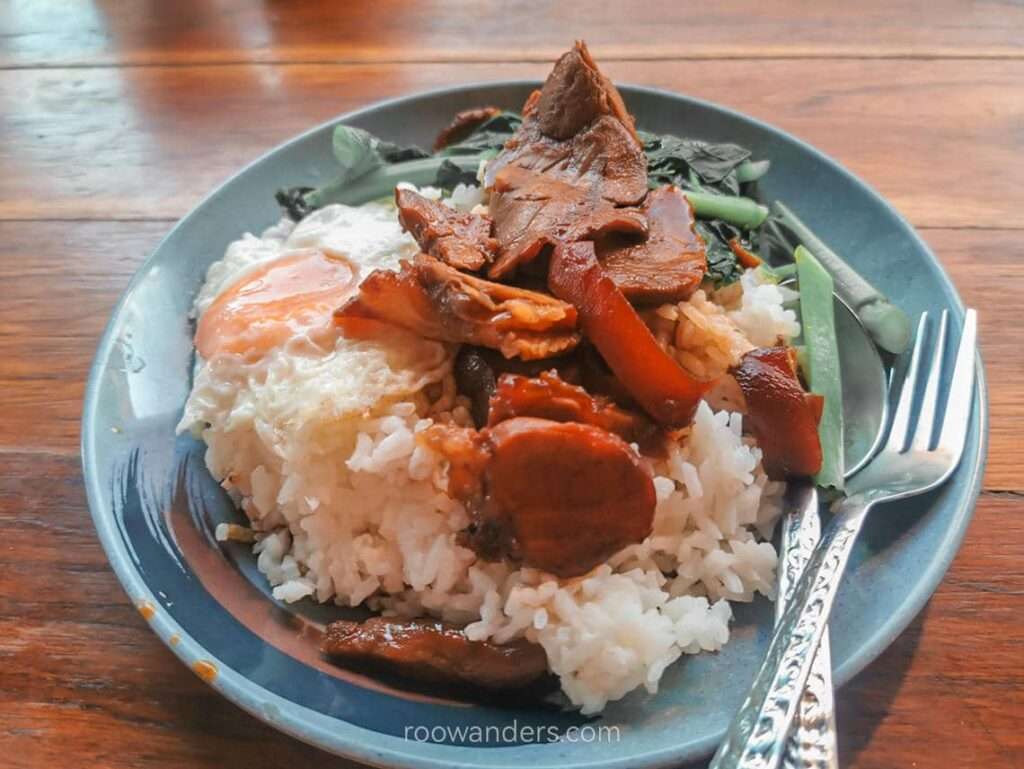
Rice Farm Cafe
We were famished by the time we finished our ice cream at the Laos Buffalo Dairy. Since the Rice Farm Cafe was on our way back to Luang Prabang, we stopped over and pampered ourselves with an assortment of delectable dishes under a hut overlooking the rice fields. Their Or Lam, or spicy Lao stew, is so hearty and delicious. We had crispy Mekong fish and crunchy river weed too. Our meal for two cost 254k kip.
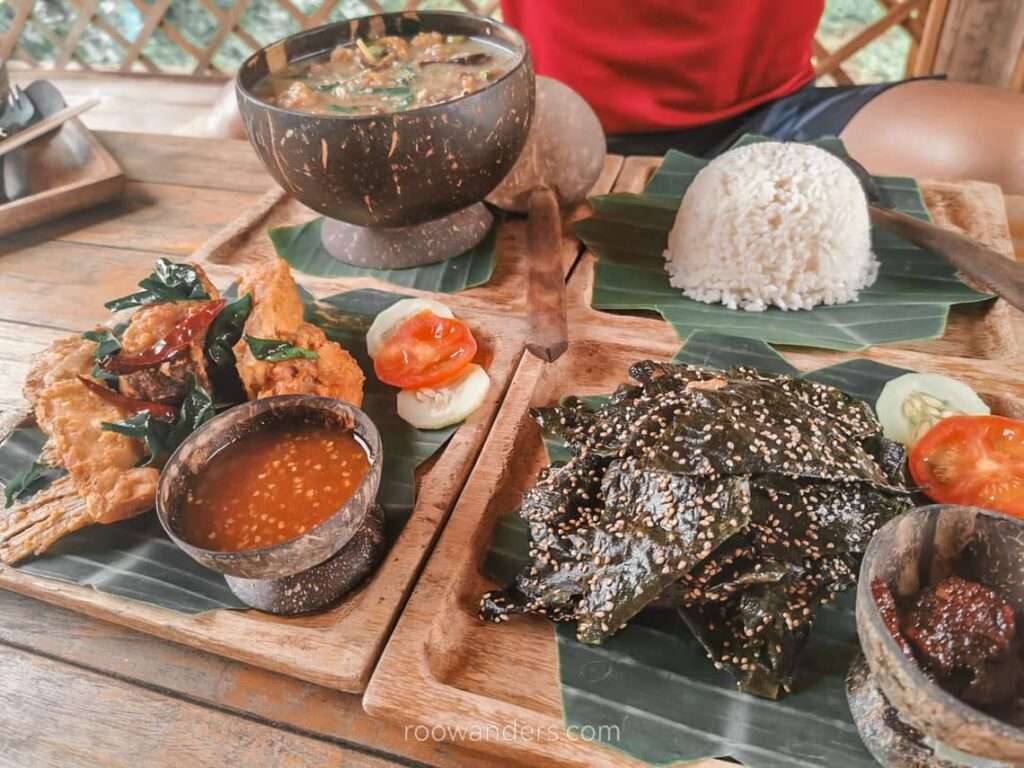
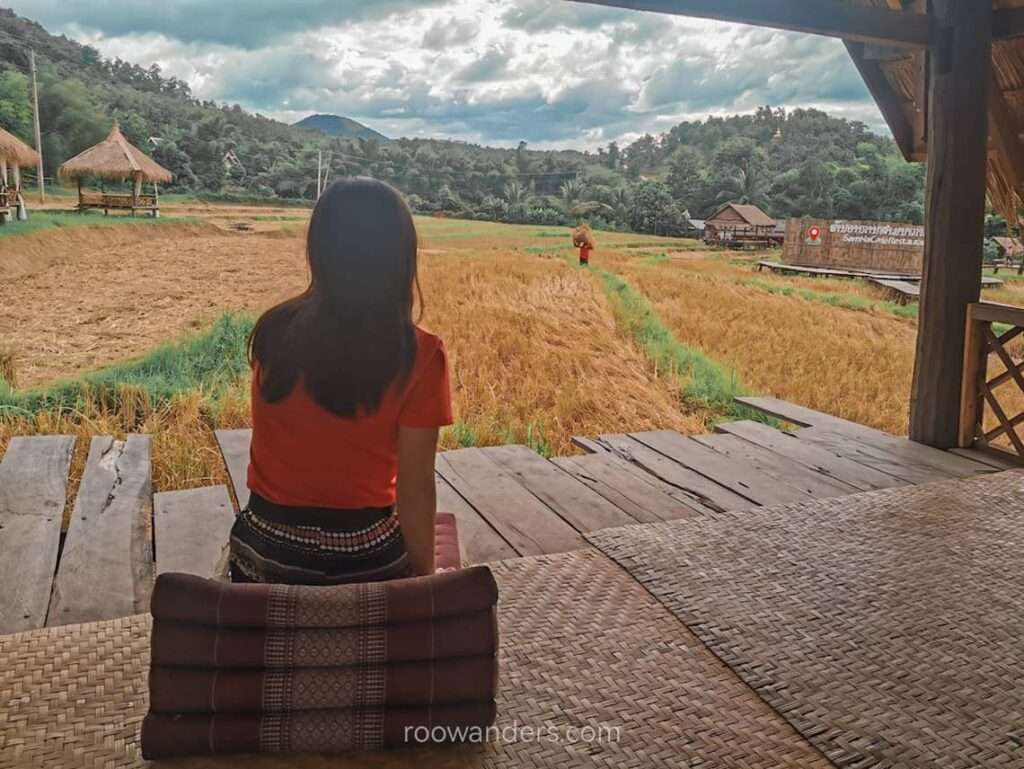
Accommodations in Luang Prabang
Budget backpacker. I stayed at the Funny Riverside Backpacker and found the hospitality, the room, their breakfast and Thursday free dinner recommendable. What truly astounded me was their lounge, which overlooks the beautiful Nam Khan River. You could spend hours reading or working there. But this hostel may be a distance away from the main attractions of Luang Prabang. The hostel my travel buddy stayed at – Barn Laos – was perfect in this case because of its proximity to Sai Bat. La Casa Hostel and Sabai Sabai are two other excellent hostels with over 9 stars in reviews.
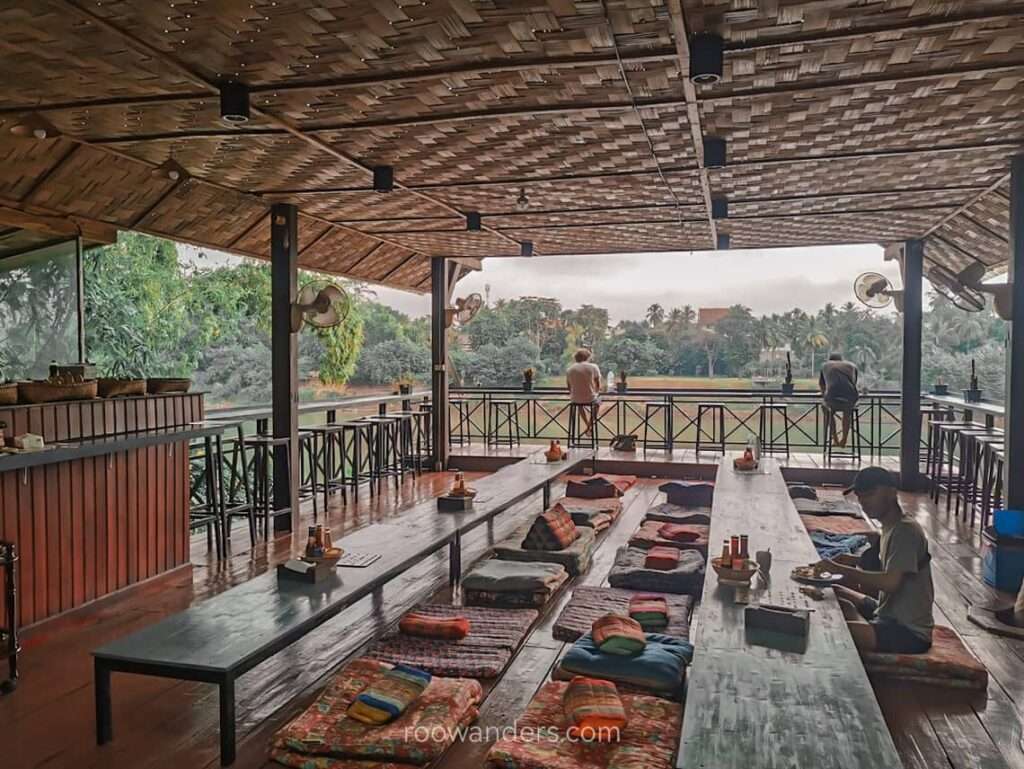
Mid-tier. If you’re looking for more privacy away from hostels, check out Rosie Place, 3-star Dear Villa House, and 3-star Merry Riverside Hotel for their good locations, low prices, and excellent reviews!
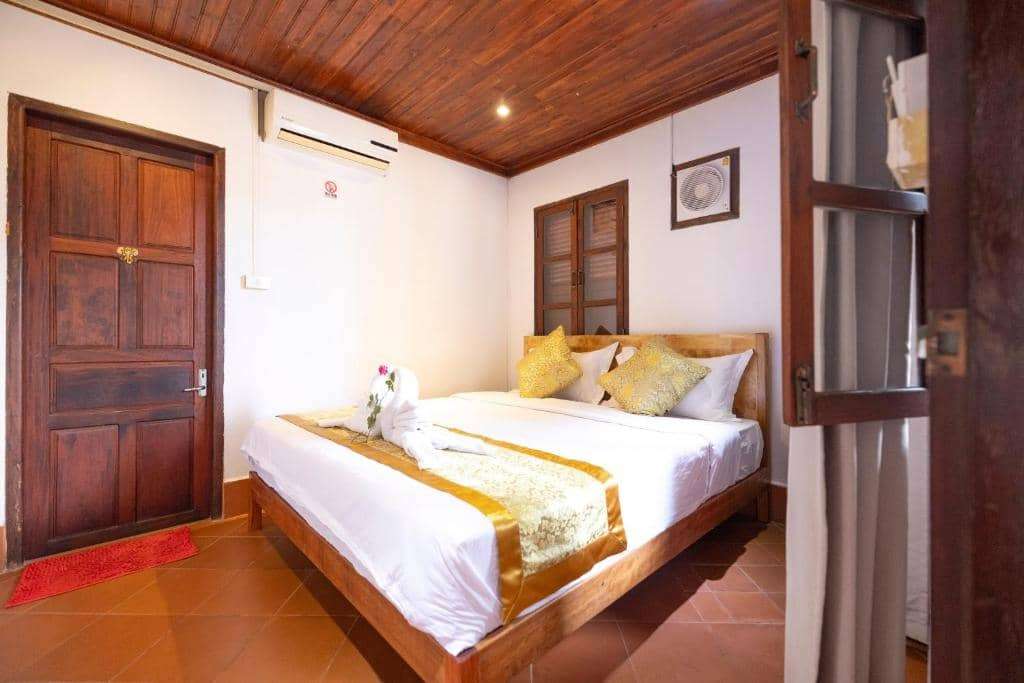
Luxury stay. Pamper yourself in the executive suite of 4-star Le Sen Boutique Hotel, or the deluxe room of 5-star Satri House Hotel. There’s also an international hotel chain Sofitel.
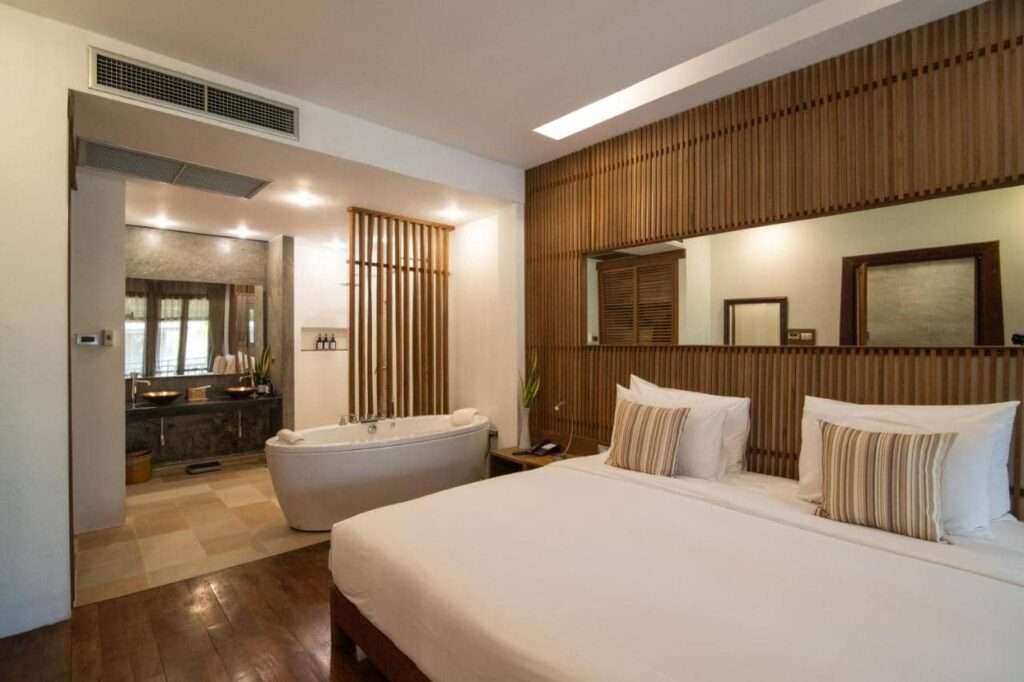
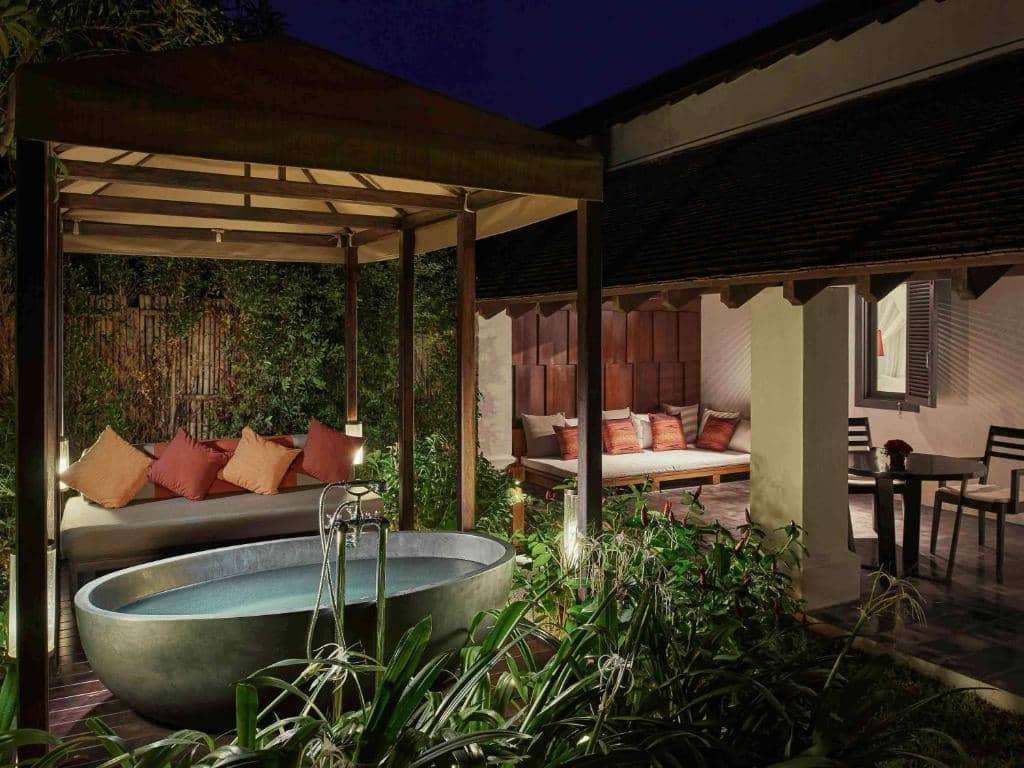
Travel beyond Luang Prabang
Luang Prabang is a great base to hop over for forest or village hikes north of Laos, such as at Luang Namtha and Nong Khiaw. It’s also a good place to visit Phonsavan for a 2D1N trip to the mysterious Plain of Jars.
Head south of Luang Prabang for more action-packed activities in Vang Vieng, and then to the capital Vientiane, for more temples, delicious food, and the COPE museum.
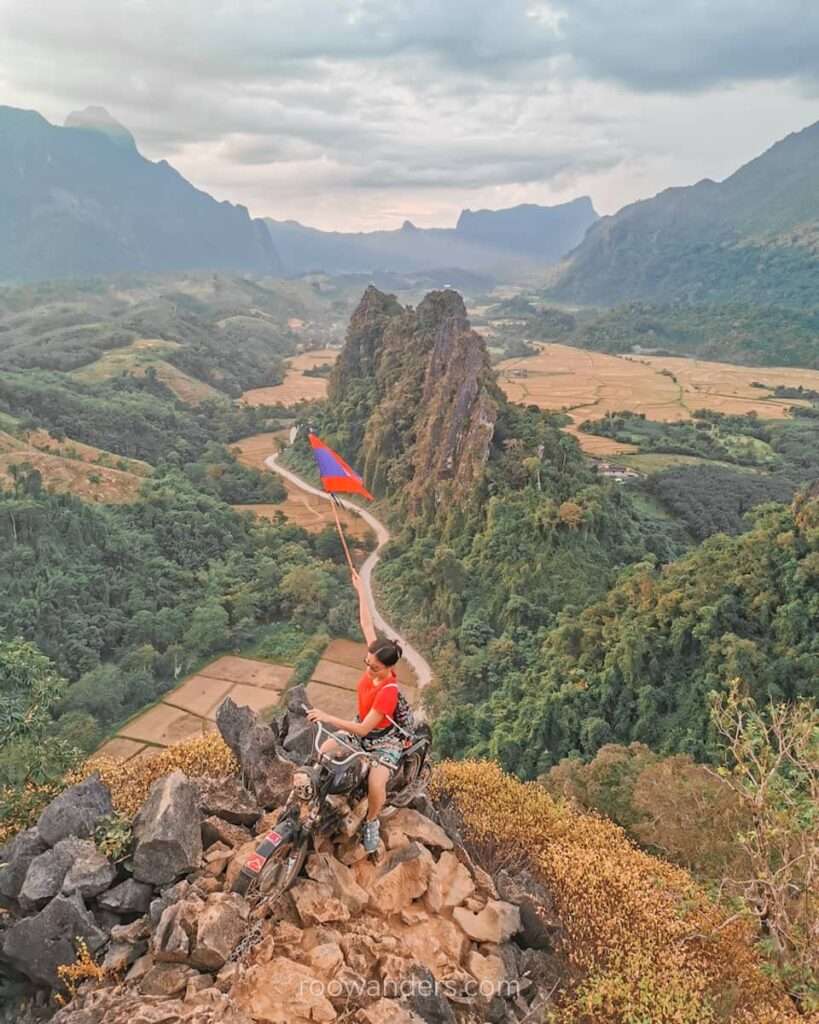
Conclusion/ Rambles
I thoroughly enjoyed my three-day adventure in Luang Prabang. There’s a reason why so many other bloggers and vloggers mentioned Luang Prabang as one of their favourite places in Laos. Some even chose to live in this city for years! It’s just so pleasant – the streets, the food, the people, the countryside, and the breeze from the gorgeous Mekong River.
Travelling in Luang Prabang felt safe – could it have been the presence of the monks? The air was so much more breathable than congested Vientiane, and less sparse yet more lively than action-packed Vang Vieng.
Sure you have the tourist crowds, but I don’t feel that threatening the comfortable vibes this ancient capital is giving. Those on big tour buses were touch-and-go and resided mainly in the big gilded temples and royal palace. Or it might have been how we travelled – dining in small family-owned local eateries, and travelling by walking or taking the motorbike. We also visited attractions like Pak Ou and the waterfalls at earlier hours. Then again, Laos is that Southeast Asian country on the lesser priority list compared to Cambodia, Thailand and Vietnam, so crowds were visibly less than that of Siem Reap, Bangkok or Hanoi.
All in all, Luang Prabang is definitely one of the most comfortable and beautiful places to travel or even live and retire in. I’m sure you’d enjoy and appreciate Luang Prabang as much as I did!
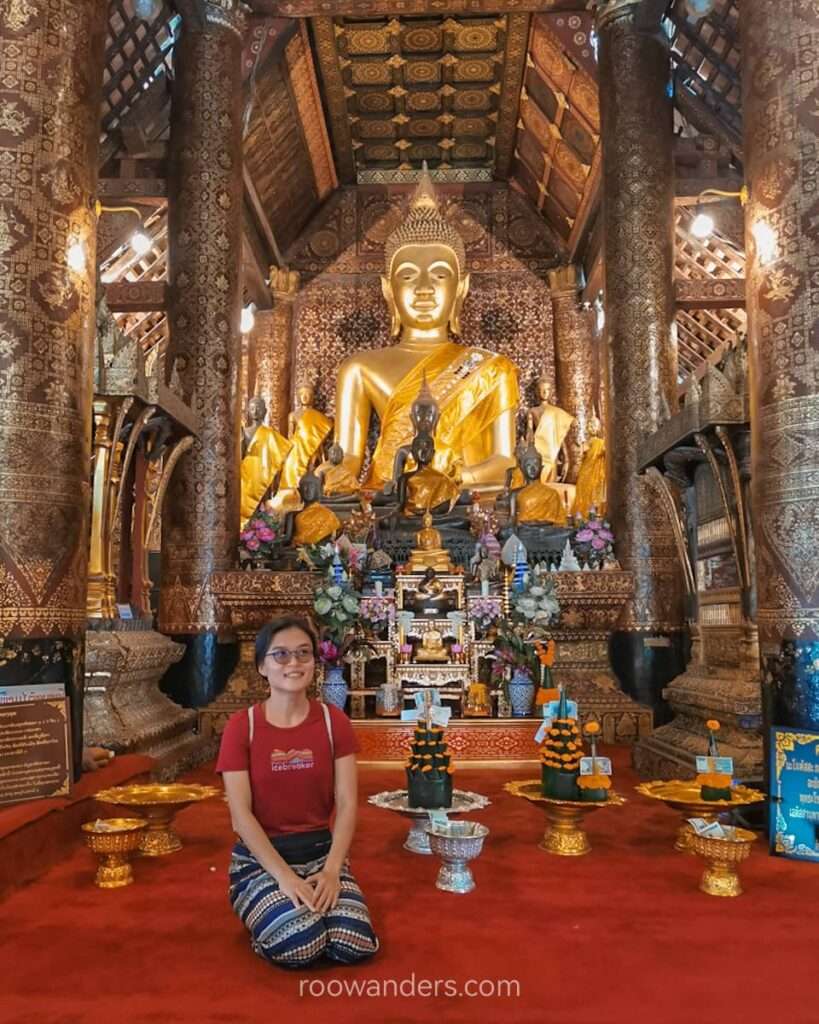





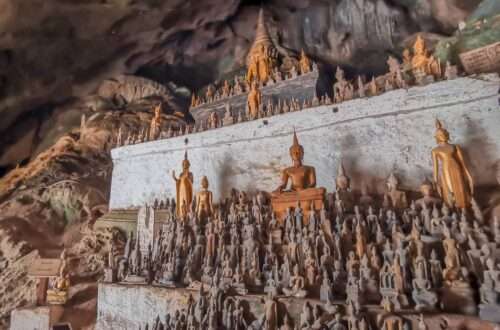
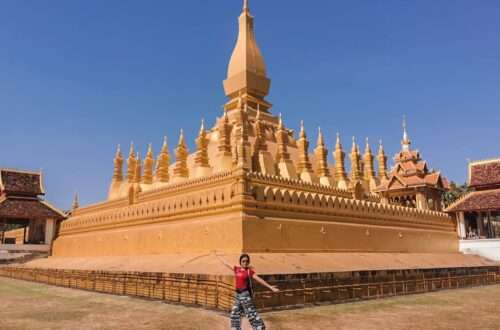
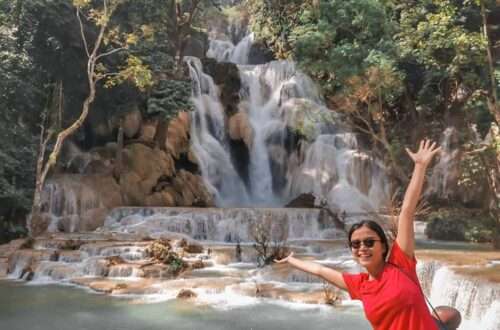
6 Comments
RRG
Hello Roo,
Thank you for your very thorough, recent, and helpful article. Would you have any advice for travelers with limited mobility and diet restrictions (can’t take meat, not spicy, low sugar) like the elderly?
Planning a Luang Prabang trip in July with my 70+ year old mother. Is that advisable?
Looking forward to your thoughts. Thank you.
Roo
Hey RRG, thanks for your kind words. Luang Prabang is a nice laid back town with not much traffic and pollution. Food-wise, there are vegetarian options since Laos is a Buddhist country. The food I’ve enjoyed are not overtly spicy or sweet, unlike Thai food. I enjoyed (and looked forward to) all my meals in Laos. I’d think it shouldn’t be an issue bringing your mom along. Arrange for private transport to bring your mom to the outskirts. July is the wet season, so be prepared for rainy days.
Malcolm
Fantastic content. I am so grateful for travellers like you, who share their experiences and helpful tips and advice to others. Keep doing what you’re doing and happy travels.
Roo
Thanks Malcolm 🥹 You too!
Tyas
Hello! I’m thinking of visiting Laos, so I was browsing around for info when I stumbled upon your blog. I’m so glad to find you’ve written several posts about the country! I’m going through them now. Thank you for writing them! Hope you don’t mind if, maybe, I have something to ask later in case your blog posts don’t cover it?
Roo
Hey Tyas, thanks for reading! Glad you’ve found them useful! You could reach out to me via IG. 🙂